Battleship Photo Index BB-37 USS OKLAHOMA (original) (raw)
Click On Image
For Full Size
Size
Image Description
Source
Keel Laying / Commissioning 1912 - 1916
269k
"Proposed B.S. #36".
Preliminary design plan prepared for the General Board during consideration of designs for Battleship # 36, which became the Nevada (BB-36 / 37) class. This plan, dated 4 March 1911, provides eight 14-inch guns, twin-screw reciprocating machinery and a speed of 21 knots in a ship 605 feet long on the load water line (L.W.L.), 95 feet in beam, with a normal displacement of 27,000 tons. The original plan is in the 1911-1925 "Spring Styles Book".
U.S. Naval Historical Center Photograph # S-584-001.
NR
ORDER TWO BATTLESHIPS
Will Be Called Nevada (BB-36) and Oklahoma (BB-37) and Cost $6,000,000 Each.
Image and text provided by Wisconsin Historical Society.
Photo from Iowa County Democrat. (Mineral Point, Wis.) 1877-1938, 25 January 1912, Image 1, courtesy of chroniclingamerica.loc.gov.
1.26k
Oklahoma (BB-37) under construction, at The New York S.B. CO., Camden, N.J., circa 1913.
Source: U.S. Naval History and Heritage Command, Photo No. NH 44400 via Mike Green.
NR
Silver Service Purchased by the State of Oklahoma at cost of $7,500 for Battleship Oklahoma (BB-37).
Image and text provided by Oklahoma Historical Society.
Photo from Tulsa Daily World. (Tulsa, Indian Territory [Okla.]) 1905-1919, 08 March 1914, MORNING EDITION, Image 2, courtesy of chroniclingamerica.loc.gov.
867k
"Battleship Oklahoma (BB-37) on the ways before launching & Miss Cruce, her sponsor. Will stand under mistletoe to name huge dreadnought."
Champagne and State Flower To Be Used by Daughter of Oklahoma's Governor. Papa, She Says, Can't Come. Fearing to Leave State to Deputy.
Image and text provided by Library of Congress, Washington, DC.
Photo & text by New-York Tribune. (New York [N.Y.]) 1866-1924, 22 March 1914, Image 12, courtesy of chroniclingamerica.loc.gov. Note: All flickr.com. photos here are from the Collection of Secretary of the Navy Josephus Daniels & photographed through Mylar sleeve.
USN photo # Lot 5365-1, courtesy of the National Museum of the U.S. Navy, via flickr.com.
534k
Stern section, rudder & propellers & propeller shaft of the Oklahoma (BB-37) before launching.
USN photo # Lot 5365-2 & 5365-4, courtesy of the National Museum of the U.S. Navy, via flickr.com.
552k
Looking up at the starboard bow section of the Oklahoma (BB-37) before launching.
USN photo # Lot 5365-3, courtesy of the National Museum of the U.S. Navy, via flickr.com.
614k
Sponsor Ms. Lorena J. Cruce, daughter of Oklahoma Governor Lee Cruce, before christening Oklahoma (BB-37).
USN photo # Lot 5365-5 & 5365-6, courtesy of the National Museum of the U.S. Navy, via flickr.com.
315k
MODEL OF THE BIGGEST BATTLESHIP SOON TO BE LAUNCHED
Image and text provided by The New York Public Library, Astor, Lenox and Tilden Foundation.
Photo from The Sun. (New York [N.Y.]) 1833-1916, 22 March 1914, FOURTH SECTION PICTORIAL MAGAZINE, Image 31, courtesy of chroniclingamerica.loc.gov.
365k
Oklahoma (BB-37) just launched on 23 March 1914, at New York Shipbuilding Company, Camden, New Jersey.
USN photo # Lot 5365-10, courtesy of the National Museum of the U.S. Navy, via flickr.com.
1.84k
Uncle Sam's Newest Dreadnought Fastest and Largest Afloat
Image and text provided by The New York Public Library, Astor, Lenox and Tilden Foundation.
Photo & text by The Sun. (New York [N.Y.]) 1833-1916, 22 March 1914, SEVENTH SECTION, Image 74, courtesy of chroniclingamerica.loc.gov.
719k
The Launching of Uncle Sam's Largest Dreadnought, the Battleship Oklahoma (BB-37) at the Camden Shipyards Last Monday at Noon.
Image and text provided by Oklahoma Historical Society.
Photo from Tulsa Daily World. (Tulsa, Indian Territory [Okla.]) 1905-1919, 27 March 1914, MORNING EDITION, Image 1, courtesy of chroniclingamerica.loc.gov.
USN photo # Lot 5365-8, courtesy of the National Museum of the U.S. Navy, via flickr.com.
NR
The Oklahoma (BB-37) is launched 23 March 1914.
Image provided by: Penn State University Libraries; University Park, PA.
Photo by Charles. O. Haimovits, from The Evening Public Ledger. (Philadelphia [Pa.]) 1914-1942, 01 March 1916, Night Extra, Image 20, courtesy of chroniclingamerica.loc.gov.
577k
Waterbourne Oklahoma (BB-37).
USN photo # Lot 5365-9, courtesy of the National Museum of the U.S. Navy, via flickr.com.
903k
THE OKLAHOMA (BB-37) BEING TOWED TO BERTH AFTER LAUNCHING
Image and text provided by Library of Congress, Washington, DC.
Photo & text by New-York Tribune. (New York [N.Y.]) 1866-1924, 24 March 1914, Image 16, courtesy of chroniclingamerica.loc.gov.
544k
NEW BATTLESHIP OKLAHOMA (BB-37) AS SHE APPEARED JUST AFTER FIRE ABOARD The cross shows where water is being pumped out of the turret in which the mysterious night blaze was discovered as the new vessel lay in the yards of the New York Shipbuilding Company at Camden. That the ship is listing to a noticeable degree is evident from the direction of the waterline.
Image provided by: Penn State University Libraries; University Park, PA.
Photo from The Evening Public Ledger.(Philadelphia [Pa.]) 1914-1942, 20 July 1915, Financial Edition, Night Extra, Image 1, courtesy of chroniclingamerica.loc.gov.
663k
Run # 10 of the Oklahoma (BB-37), underway at 20.04 knots on preliminary trial at standardization course at Rockland, ME., 15 January 1916.
US National Archives photo # 80-G-1035099 from NARA, College Park, Maryland, courtesy of Sean Hert.
1.01k
Oklahoma (BB-37) underway on preliminary trial at standardization course at Rockland, ME., 15 January 1916.
National Archives Identifier:55167372
Local Identifier: 111-SC-002990.
Photo courtesy of catalog.archives.gov
501k
"U.S. super dreadnought Oklahoma (BB-37), latest and largest ship of the American Navy, shouldering along at more than twenty knots an hour on her first trial trip off the Maine coast a week ago."
Photo courtesy of 1916 edition of Popular Science via Robert Hurst.
573k
****OKLAHOMA (BB-37) OUR NEWEST GIANT SEA FIGHTER OFF FOR ITS TRIALS**
The battleship Oklahoma, latest super dreadnought to be added to the United States navy, here seen as she passed beneath the Brooklyn bridge on her way to the coast of Maine for official trials, stood the first tests well. She developed a speed of 21.47 knots.
Image and text provided by University of Utah, Marriott Library & University of Nebraska-Lincoln Libraries, Lincoln, NE.
Photo & text by The Logan Republican.(Logan, Utah) 1902-1924, 01 February 1916, Image 4 & The North Platte Semi-Weekly Tribune. (North Platte, Neb.) 1895-1922, 28 January 1916, Image 3 courtesy of chroniclingamerica.loc.gov.
679k
As part of their training, a class of Naval Recruits at the United States Naval Training Station in Newport, Rhode Island, use a scale model of the type of ship they will be serving on to familiarize themselves with the its functions. Here the lecturer is discussing the position of the Conning Tower.
Photo by Hulton-Deutsch Collection/CORBIS/Corbis via Getty Images, courtesy of gettyimages.com.
244k
Oklahoma (BB-37) passing under the Brooklyn Bridge, during her trials period, circa 1916. Note New York S.B. Company Flag.
Source: U.S. Naval History and Heritage Command, Photo No. NH 44419 via Mike Green.
NR
THE OKLAHOMA (BB-37) GREATEST BATTLESHIP IN UNITED STATES NAVY
1. Deck view of the battleship Oklahoma.
2. The dreadnought steaming toward the Brooklyn navy yard immediately after her completion.
3. One of the fighting towers.
4. Battery of five fourteen-inch guns.
5. Another deck view.
Image and text provided by State Historical Society of North Dakota.
Photo & text by Grand Forks Daily Herald. (Grand Forks, N.D.) 1914-1916, 29 January 1916, Image 9 courtesy of chroniclingamerica.loc.gov.
343k
Supply of 14 inch shells on the deck of the Oklahoma (BB-37).
Photo by International Film Service.
National Archives Identifier: 45511944
Local Identifier: 165-WW-331A-025.
Photo courtesy of catalog.archives.gov
NR
DREADNOUGHT OKLAHOMA (BB-37) COMPLETED, ENTERS SERVICE
The picture shows the latest addition to the navy as she appeared in the Delaware River after leaving the New York Shipbuilding yards in Camden for the Navy Yard, where she was put in commission this afternoon.
Image and text provided by Penn State University Libraries; University Park, PA.
Photo & text by Evening Public Ledger. (Philadelphia [Pa.]) 1914-1942, 02 May 1916, Night Extra, Image 3, courtesy of chroniclingamerica.loc.gov.
67k
Captain Roger Welles was the commanding officer of the battleship Oklahoma (BB-37) from 02.05.1916 - 10.01.1917.
Photo courtesy of the James Melville Gilliss Library via Bill Gonyo.
NR
****OKLAHOMA (BB-37), OIL-BURNING SUPER-DREADNAUGHT. IS LATEST ADDITION TO UNCLE SAM'S FIGHTING FORCES ON THE SEA**
Top, prayer and invocation on Oklahoma's deck; bottom, Oklahoma at anchor. The Oklahoma is the very latest addition to Uncle Sam's navy. She is an oil burner and one of the biggest fighting craft afloat. The vessel cost about $7,000,000 and has 27,000 tons displacement.
Image and text provided by West Virginia University.
Photo by The Sunday Telegram. [volume] (Clarksburg, W. Va.) 1914-1927, 07 May 1916, Image 1, courtesy of chroniclingamerica.loc.gov.
478k
CEREMONIES ATTEND DREADNOUGHT OKLAHOMA'S (BB-37) ENTRY INTO SERVICE
This was the scene on the forward deck of the Navy yard yesterday afternoon when her complement of 800 men and 50 officers were drawn up formally to receive the papers which put their ship into commission. Her flag, shown here, was the gift of the Daughters of Liberty and cost $500.
Image provided by: Penn State University Libraries; University Park, PA.
Photo from The Evening Public Ledger.(Philadelphia [Pa.]) 1914-1942, 03 May 1916, Night Extra, Image 20, courtesy of chroniclingamerica.loc.gov.
162k
Chart house of the Oklahoma (BB-37), Navy Yard New York, 19 July 1916.
Photo Source: NARA College Park, Maryland, Record group "19-E-12-N USS Oklahoma BB-37 Interior 1916."
Photo courtesy of Tracy White @ Researcher @ Large.
450k
Junior Officer's Messroom, Navy Yard New York, 19 July 1916.
Photo Source: NARA College Park, Maryland, Record group "19-E-12-N USS Oklahoma BB-37 Interior 1916."
Photo courtesy of Tracy White @ Researcher @ Large.
434k
C.P.O. Messroom, Navy Yard New York, 19 July 1916.
Photo Source: NARA College Park, Maryland, Record group "19-E-12-N USS Oklahoma BB-37 Interior 1916."
Photo courtesy of Tracy White @ Researcher @ Large.
474k
Steering Room Showing Machinery, Navy Yard New York, 19 July 1916.
Photo Source: NARA College Park, Maryland, Photo # 3173.
Photo courtesy of Tracy White @ Researcher @ Large.
432k
Wardroom Pantry, Navy Yard New York, 19 July 1916.
Photo Source: NARA College Park, Maryland, Record group "19-E-12-N USS Oklahoma BB-37 Interior 1916."
Photo courtesy of Tracy White @ Researcher @ Large.
476k
Laundry, Navy Yard New York, 19 July 1916.
Photo Source: NARA College Park, Maryland, Record group "19-E-12-N USS Oklahoma BB-37 Interior 1916."
Photo courtesy of Tracy White @ Researcher @ Large.
466k
Warrant Officers Messroom, Navy Yard New York, 24 July 1916.
Photo Source: NARA College Park, Maryland, Record group "19-E-12-N USS Oklahoma BB-37 Interior 1916."
Photo courtesy of Tracy White @ Researcher @ Large.
442k
Steering Room Showing Machinery, Navy Yard New York, 24 July 1916.
Photo Source: NARA College Park, Maryland, Record group "19-E-12-N USS Oklahoma BB-37 Interior 1916."
Photo courtesy of Tracy White @ Researcher @ Large.
561k
Paint Room, Navy Yard New York, 5 August 1916.
Photo Source: NARA College Park, Maryland, Record group "19-E-12-N USS Oklahoma BB-37 Interior 1916."
Photo courtesy of Tracy White @ Researcher @ Large.
624k
Broadside view of the Oklahoma (BB-37) at NYNY, 5 August 1916.
National Archives Identifier: 45512589
Local Identifier: 165-WW-334A-58.
Photo courtesy of catalog.archives.gov
104k
Crewmen cleaning the center 14"/45 gun of the battleship's after turret, circa 1916.
Naval History and Heritage Command # NH 44422 via Robert Hurst & Scanned from Conway's Battleships: Revised Edition, edited by Ian Sturton.
NR
HITTING TARGET AT 20.000 YARDS IS FEAT OF BIG GUNS
Hitting a target at 20,000 yards with fourteen inch guns probably will put our navy above all others. That's what the dreadnoughts Pennsylvania (BB-38) and Oklahoma (BB-37) did in Chesapeake bay. The target was the hulk of the San Marcos, formerly the battleship Texas. No. 1. Pennsylvania, No. 2 Oklahoma's fourteen inch guns. No.3 San Marcos pierced by a shell.
Image and text provided by University of Nevada Las Vegas University Libraries.
Photo from The Goldfield News and Weekly Tribune. [volume] (Goldfield, Nev.) 1911-1947, 23 September 1916, Image 2, via chroniclingamerica.loc.gov.
613k
FIRING A SALVO OF FIVE-INCH GUNS AT NIGHT FROM OKLAHOMA (BB-37).
Image and text provided by Kansas State Historical Society; Topeka, KS.
Photo & text by The Topeka State Journal. , (Topeka, Kan.) 1892-1980, 13 November 1916, HOME EDITION, Image 5 courtesy of chroniclingamerica.loc.gov.
1917 - 1929
3.96k
A Joseph Pennell Print showing what appears to be a Nevada (BB-36/37) class battleship in shipyard, 1917.
Image and text provided by loc.gov
NR
COMMANDER ANDREWS
Adolphus Andrews, U. S. N., who is commander of the American battleship Oklahoma (BB-37).
Image and text provided by Wisconsin Historical Society.
Photo & text by The Watertown News. [volume].(Watertown, Wis.) 1917-1919, 20 June 1917, Image 1, courtesy of chroniclingamerica.loc.gov.
85k
Captain Spencer S. Wood was the commanding officer of the battleship Oklahoma (BB-37) from 6 June 1917 to 1 February 1918.
Photo courtesy of the Library of Congress via of Bill Gonyo.
781k
59 foot steamer of the Arkansas (BB-33).
The camouflaged Oklahoma (BB-37) & Nevada (BB-36) are to the left & right.
Photo i.d. courtesy of Richard M. Jensen.
National Archives Identifier: 45512484
Local Identifier: 165-WW-334A-009.
Photo courtesy of catalog.archives.gov
478k
Starboard view, circa 1917.
Photo courtesy of John A. Wetherington via George Wetherington.
142k
LOOKING DOWN UPON THE DECK OF ONE OF UNCLE SAM'S BIG SEA FIGHTERS NOW PAYING A VISIT TO LEAGUE ISLAND.
Either the Nevada (BB-36) or Oklahoma (BB-37).
Image and text provided by Penn State University Libraries; University Park, PA.
Photo from the Evening Public Ledger. (Philadelphia [Pa.] 1914-1942, 03 February 1917, Night Extra, Image 16, courtesy of chroniclingamerica.loc.gov.
NR
"Teuton High Fliers must be aware of Uncle Sam's Eagle Eye."
While equipped with latest devices to destroy enemy submarines, the men behind the anti-aircraft gun on the battleship Oklahoma (BB-37) know how to use that weapon.
Image and text provided by Penn State University Libraries; University Park, PA.
Photo & text by Evening Public Ledger. (Philadelphia [Pa.]) 1914-1942, 29 June 1917, Final, Pictorial Section, Image 21, courtesy of chroniclingamerica.loc.gov.
53k
THE EYES OF THE NAVY.
A naval observation balloon hovering over the fighting mast of the Oklahoma (BB-37).
Image provided by: Penn State University Libraries; University Park, PA.
Photo by Evening Public Ledger. (Philadelphia [Pa.]) 1914-1942, 29 June 1917, Final, Pictorial Section, Image 22, courtesy of chroniclingamerica.loc.gov.
NR
Torpedoes Ready for Launching
Here is shown a stern view of two torpedoes on board the battleship Oklahoma (BB-37), both ready for launching at an enemy. The propellers send them through the water at approximately 40 miles and hour, and the utmost accuracy can be obtained at moderate ranges. They each carry enough high explosives to send the most powerful German warship to the bottom. This photograph has been passed by the censor.
Image and text provided by Indiana State Library.
Photo & text by South Bend News-Times. (South Bend, Ind.) 1913-1938, 30 June 1917, AFTERNOON EDITION, Image 1, courtesy of chroniclingamerica.loc.gov.
452k
Oklahoma's (BB-37) torpedo trolley.
Photo courtesy of Tommy Trampp.
674k
Wash Day on the Oklahoma (BB-37). The Atlantic Ocean does its bit by helping to scrub the deck.
Backed by these giant 14-inch guns, our jackies fear no enemy warships. There are ten in the Oklahoma's batteries. Superdreadnoughts of the Pennsylvania class (BB-38/39) carry twelve.
Image and text provided by Library of Congress, Washington, DC.
Photo & text by New-York Tribune. (New York [N.Y.]) 1866-1924, 08 July 1917, Image 53, courtesy of chroniclingamerica.loc.gov.
343k
DREADNOUGHT OKLAHOMA (BB-37) FIRES AT IMAGINARY FOE
The dreadnought Oklahoma at battle practice.
"Somewhere on the Atlantic" this huge sea fighter is waiting for the chance to try conclusions with the flower of the kaiser's navy. The kaiser's ships probably will not venture out just because Uncle Sam and John Bull have many floating fortresses like this. The gunners on the Oklahoma are among the best in the world.
Image and text provided by University of Utah, Marriott Library.
Photo & text by The Ogden Standard. (Ogden City, Utah) 1913-1920, 10 September 1917, 4 P.M. CITY EDITION, Image 5, courtesy of chroniclingamerica.loc.gov.
National Archives Identifier: 45512587
Local Identifier: 165-WW-334A-57.
Photo courtesy of catalog.archives.gov
58k
"Armor piercing shells weighing half a ton or more apiece being loaded on an American Dreadnought that is preparing to sail for European waters."
Photo by Central News Photo Service.
Partial text from The War of the Nations (New York) N.Y. Times, 31 December 1919, courtesy of memory.loc.gov.
177k
Oklahoma (BB-37) anchored in the waterways of New York City during the late teens.
USN photo courtesy of Robert M. Cieri.
148k
Capt. Mark L. Bristol was the commanding officer of the battleship Oklahoma (BB-37) from 2 March 1918 to 14 October 1918.
Photo courtesy of the Library of Congress via Bill Gonyo.
1.17k
Dry Dock No. 4, from West; The Geo. Leary Construction Co.; U.S. Navy Yard, Norfolk, Va; 2 April 1918. Oklahoma (BB-37) provides firing cover.
Photo i.d. courtesy of Richard M. Jensen.
National Archives Identifier: 52557639
Local Identifier: 181-V-1559
Photo courtesy of catalog.archives.gov
610k
THE U. S. NAVY DEBATING TEAM
Showing several possible methods of closing an argument, now in preparation on board our dreadnoughts.
The answer to these 14-inch arguments is: "O, very well! Have it your own way, then!
Bringing up a little something for the 5-inch gun.
A couple of torpedoes. Why say more?
(The Oklahoma (BB-37) is probably the focus of all the photos here.)
Image and text provided by Library of Congress, Washington, DC.
Photo from New-York Tribune. (New York [N.Y.]) 1866-1924, 23 June 1918, Image 57, courtesy of chroniclingamerica.loc.gov.
686k
Oklahoma (BB-37) at Berehaven, Ireland, 1918.
Source: U.S. Naval History and Heritage Command, Photo No. NH 44404 via Mike Green.
72k
Battleships of the Sixth Battle Squadron (anchored in column in the left half of the photograph) included the:
Florida (BB-30)
Utah (BB-31)
Wyoming (BB-32)
Arkansas (BB-33)
New York (BB-34)
Texas (BB-35)
Nevada (BB-36)
Oklahoma (BB-37)
Pennsylvania (BB-38)
&Arizona (BB-39) at one time or another.
There are only three of the battleships present in this photo at Brest, France, on 13 December 1918. George Washington (ID-3018), which had just carried President Woodrow Wilson from the United States to France, is in the right background. Photographed by Zimmer
Naval History and Heritage Command # NH 63454.
644k
Oklahoma (BB-37) off France in late 1918.
Source: U.S. Naval History and Heritage Command, Photo No. NH 44405 via Mike Green.
314k
The picture is clearly labeled as Florida (BB-30), but there are several characteristics of this ship that don't seem to match the Florida (BB-30 / 31) class.
First, the picture in question clearly has one stack, while the Florida had two until her modernization in 1926.
Second, the Florida had five turrets, with turrets D & E being mounted back-to-back, with turret C mounted one level above. However, the picture in question clearly has four turrets, with turret C superimposed above turret D.
Third, the twelve-inch turrets of the Florida class had flat tops. However, if you look closely at the turrets of the ship in this picture (especially at the rear part of turret D), you can see that the turrets on this ship have curved tops.
As a result of the ship in this picture having a single stack and four turrets with curved tops, this would limit the choices to a Nevada or Pennsylvania class (BB-38/9) ship. However, based on two primary characteristics of the ship in this picture, I believe this is a Nevada class ship.
First, the notch at the stern of the ship, which I don't believe I've ever seen in a picture of a Pennsylvania class (BB-38 / 39) ship, but is clearly visible in the picture of the Oklahoma (BB-37).
Second, the location of the stack very close to the foremast, as shown in this picture of the Nevada.
The picture of the Arizona (BB-39) shows that the stack was a little further back from the mainmast in a Pennsylvania class.
If you focus in on the stern of the ship, just forward of the step and just below the main deck edge the ship's name is visible. Though the letters are not readable, what is evident is that it is a long name. Having narrowed the vessel down to 2 ships, one of whose name is twice as long as her sister, I think it is safe to identify this ship as Oklahoma and not Nevada. The Oklahoma in port with the destroyer Fairfax (DD-93), sometime after 27 October 1918, when she arrived at Brest for patrol and escort duty in European waters.
On 3 December 1918, Fairfax arrived in the Azores to meet and escort to Brest, the transport George Washington (ID-3018) carrying President W. Wilson to the Peace Conference. She sailed for home 21 December, reaching Norfolk 8 January 1919.
Text courtesy of DANFS.
Photo i.d. & text courtesy of Ronald J. Nash & Chris Hoehn.
USN photo courtesy of Scott Koen & ussnewyork.com.
2.27k
SUNSET OVER THE VICTORY FLEET
The battleships of the U.S. Atlantic Squadron just back from its vigilant watch in the North Sea is here shown at rest in the Hudson River as the sun slowly sinks in the West. In the distance is the Oklahoma (BB-37), Nevada (BB-36), Utah (BB-31) & Pennsylvania (BB-38).
Photographer: Underwood & Underwood.
National Archives Identifier: 45513328
Local Identifier: 165-WW-337D-012.
Photo courtesy of catalog.archives.gov
429k
Two flags fly over Oklahoma (BB-37) during the Naval Review of the Victory Fleet, 26 December 1918.
National Archives Identifier:55246396
Local Identifier: 111-SC-43769.
Photo courtesy of catalog.archives.gov
739k
OVERSEAS FLEET IN HUDSON RIVER
Right to left: Nevada (BB-36), Oklahoma (BB-37), Arizona (BB-39), New Mexico (BB-40) & Mississippi (BB-41).
Photographer: Paul Thompson
National Archives Identifier: 45513390
Local Identifier: 165-WW-337D-43.
Photo courtesy of catalog.archives.gov
2.00k
The sun sets on Atlantic fleet battleships of the Nevada class (BB-36/37), a Florida class (BB-30/31) followed by a Wyoming (BB-32/33) class battleship surrounded by lots of small boats in New York Harbor during the Naval Review of the Victory Fleet, December 1918.
National Archives Identifier:45513394
Local Identifier: 165-WW-337D-45.
Photo courtesy of catalog.archives.gov
290k
Photographed circa 1917, while painted in an experimental camouflage pattern.
National Archives Identifier: 45512595
Local Identifier: 165-WW-334A-61.
Photo courtesy of catalog.archives.gov
5.07k
Oklahoma (BB-37) anchored in Guantanamo Bay, Cuba, 1 April 1919. Panoramic photograph by L.C. Grant with Falk Photo Company, Boston, Massachusetts. Note the steam launch in the center foreground, and the wavy nature of the image, the result of the rocking of the photographer's boat as the panoramic camera scanned along Oklahoma's length.
U.S. Naval Historical Center Photograph # NH 105064.
1.78k
"American dreadnoughts & super-dreadnoughts steaming into New York harbor 14 April 1919."
The Texas (BB-35) leads the procession with a airplane on her turret catapult. Note the escorting biplane.
The "escorting" aircraft is either a Curtiss HS-1 or HS-2 (note the single engine) can't tell which from the photo. The aircraft on a fly-off platform atop the No. 2 turret of the Texas is 1 of 6 Sopwith Camels purchased from Britain at the end of the war.
The platforms were a British concept designed to provide the fleet with an aircraft capable of reaching the high flying Zeppelins which the German Navy occasionally used as scouts. The Texas was the only US Battleship to be fitted with turret fly-off platforms while in Europe and was the test bed for this program in the US Navy. Not visible in this view is a stripped down (No fabric and no wings) Sopwith 1-1/2 Strutter lashed atop the No. 3 Turret. The platforms were eventually mounted on all 14" gun BB's through the New Mexico (BB-40 / 42) class (with mixed reviews from their commanders) and carried either a Hanriot HD-1 or a Nieuport' 28. Though equipped inflatable floats for water landings, this tended to do a lot of damage not the least of which was dowsing a hot engine in cold salt water. By 1920 a successful compressed air catapult was developed and were being mounted on the aft deck of all 4 turreted battleships and fly-off platforms were removed. The Texas and New York (BB-34), because of their 5 Turrets, lacked the deck space for the catapult and had to make do with a float plane (Vought VE-7) sitting on the aft deck which would be launched by lowering it over the side for a surface take-off.
If you look carefully at the photo you see the VE-7 on the deck and the A-frame hoist used for handling it.
Photo by Paul Thompson.
Text courtesy of N.Y. Times, page 481, from The War of the Nations (New York), 31 December 1919, courtesy of memory.loc.gov.
Text i.d. courtesy of Chris Hoehn.
NR
How the Atlantic Fleet looked to the camera man in a seaplane flying over lower Manhattan a week ago yesterday morning as the mighty armada came up the bay to anchorage in the Hudson off Riverside Drive for a two weeks' vacation after months of strenuous maneuvers in Southern waters. The destroyers Dale (DD-290) and Flusser (DD-289) are shown leading the column of eight dreadnoughts: Oklahoma (BB-37), Nevada (BB-36), Arizona (BB-39), flagship Pennsylvania (BB-38), Utah (BB-31), Florida (BB-30), North Dakota (BB-29) and Delaware (BB-28) past the Statue of Liberty at a fifteen-knot clip. In addition to the big battleships, the fleet includes thirty-two destroyers, numerous supply ships and several submarines.
The Atlantic battleship fleet is home: again. Here are the twelve great first line fighting ships that are paying Father Knickerbocker a two weeks' visit. Over a hundred of Uncle Sam's grim sea warriors gray the North River, while their 30,000 sailor-men are given the freedom of the city in a royal welcome home.
The Battleship Mississippi (BB-41) leading the fleet into the harbor, as photographed from an airplane. Note the airplanes atop the forward and aft turrets.
Image provided by: Library of Congress, Washington, DC.
Photo & text by New-York Tribune. (New York [N.Y.]) 1866-1924, 20 April 1919, Image 48. courtesy of chroniclingamerica.loc.gov.
3.34k
"The towering hull of the Oklahoma (BB-37) has a keel that is very heavily weighted to offset the ponderous armament above."
Photo by International News Agency.
Text courtesy from The War of the Nations (New York) N.Y. Times, 31 December 1919, Page 376, courtesy of memory.loc.gov.
3.34k
"Part of the main battery of five fourteen inch guns on one of the latest and most formidable of United States dreadnoughts."
Photo by Central News.
Text courtesy from The War of the Nations(New York) N.Y. Times, 31 December 1919, Page 376, courtesy of memory.loc.gov.
2.23k
Four photo PDF of either the Nevada (BB-36) or Oklahoma (BB-37) at New York (Brooklyn) Navy Yard, New York City, New York. Sailors cleaning the hull of a battleship.
Photo # Lot 5371-7 / 10
Photograph album donated by the heirs of Secretary of the Navy Josephus Daniels, courtesy of the National Museum of the U.S. Navy, via flickr.com.
93k
"Torpedo of the 21 inch type being gotten ready to be lowered into the hold of the Oklahoma (BB-37). Expelled from the tube by compressed air, is self propelling, explodes on contact and has charge of 200 pounds of gun powder."
Photo by Central News Photo Service.
Partial text from The War of the Nations (New York) N.Y. Times, 31 December 1919, courtesy of memory.loc.gov.
67k
Halftone reproduction of a photograph taken in the ship's officers' ward room, circa 1918-1919. This view was published circa 1919 as one of ten images in a "Souvenir Folder" concerning Oklahoma (BB-37).
Naval History and Heritage Command # NH 105734. Donation of Dr. Mark Kulikowski, 2008.
69k
Halftone reproduction of a photograph looking forward from near the ship's stern, showing her after 14"/45 guns, circa 1918-1919. Note the destroyers tied up alongside. This view was published circa 1919 as one of ten images in a "Souvenir Folder" concerning Oklahoma (BB-37).
Naval History and Heritage Command # NH 105736. Donation of Dr. Mark Kulikowski, 2008.
73k
Halftone reproduction of a photograph taken in the crew's galley, circa 1918-1919. This view was published circa 1919 as one of ten images in a "Souvenir Folder" concerning Oklahoma (BB-37).
Naval History and Heritage Command # NH 105737. Donation of Dr. Mark Kulikowski, 2008.
73k
Halftone reproduction of a photograph taken in a crew's compartment, circa 1918-1919. Note the 5"/51 gun at far right and hammock hooks mounted on the beams overhead. This view was published circa 1919 as one of ten images in a "Souvenir Folder" concerning Oklahoma (BB-37).
Naval History and Heritage Command # NH 105738. Donation of Dr. Mark Kulikowski, 2008.
71k
Halftone reproduction of a photograph taken in the ship's surgical operating room, circa 1918-1919. This view was published circa 1919 as one of ten images in a "Souvenir Folder" concerning Oklahoma (BB-37).
Naval History and Heritage Command # NH 105739. Donation of Dr. Mark Kulikowski, 2008.
74k
Halftone reproduction of a photograph taken in the ship's sick bay, circa 1918-1919. This view was published circa 1919 as one of ten images in a "Souvenir Folder" concerning Oklahoma (BB-37).
Naval History and Heritage Command # NH 105740. Donation of Dr. Mark Kulikowski, 2008.
54k
Captain Noble E. Irwin was the commanding officer of the battleship Oklahoma (BB-37) from 9 July 1919 to 5 July 1921.
Photo courtesy of the Library of Congress via Bill Gonyo.
877k
Keeping the Navy Clean. Airing Bedding aboard the Oklahoma (BB-37), 17 August 1919
Photographer: International Film Service.
National Archives Identifier: 45512418
Local Identifier: 165-WW-333C-007.
Photo courtesy of catalog.archives.gov
2.81k
Oklahoma (BB-37) in drydock at the Norfolk Naval Shipyard, Portsmouth, VA., in 1920.
Photo from the Robert J. Lewis collection.
Photo courtesy of Butch & Debbie Baxter.
856k
Oklahoma (BB-37) underway off Guantanamo Bay Cuba, 1 January 1920.
Source: U.S. Naval History and Heritage Command, Photo No. NH 44413 via Mike Green.
794k
Guantanamo Bay Cuba, 1 January 1920 early in her career. She is shown here with flying off platforms extended over both her super-firing turrets, her flying bridge transformed into an enclosed navigating bridge, and her torpedo-defense platforms enclosed in vee-front windscreens. Long based armored range finders surmount both navigating bridge & No. 3 turret. Note that three 5-inch guns are missing, one right forward, and two aft, together with the single gun at the extreme stern. Unlike earlier battleships, these ships never had antiaircraft guns atop their derrick posts. One such weapon is visible abaft the 5in/51 gun on the 01 level. Other such weapons were added later. The two starboard 5-inch directors are visible, one just abaft her funnel and one abaft the break of her forecastle, abeam her mainmast. Note, too, the long-base range finder atop No.2 turret, at its rear.
Text courtesy of U.S. Battleships: An Illustrated Design History by Norman Friedman.
USN photo courtesy of Scott Koen & ussnewyork.com.
1.46k
A painting by the artist Wayne Scarpaci entitled 'Into the Storm'.
This is my latest effort on the Battleship Nevada Centennial Project. It shows the Nevada (BB-36) in 1920 with sister ship Oklahoma (BB-37) and near sister Arizona (BB-39). Notice the 'Flying Off' platform atop turret 2. The platform folded out over the gun barrels and a wheeled aircraft would take off unassisted. The ship was unable to recover the plane so it would have to fly to a shore base to land. Starting in the mid-1920's compressed air launch catapults for floatplanes were added to all US battleships on their fantails. A light derrick type crane was added to the very stern to hoist the aircraft back aboard. In the the mid 1930's the compressed air catapult was replaced with a powder launch type (Which used a 5" powder charge). And a second catapult was added to the top of turret 3 and heavier crane added astern to handle the ever increasing weight of the aircraft carried. Early in WWII the catapult atop turret 3 was removed in all US battleships. In 1947 the USN cancelled the shipboard floatplane program and removed the catapults from all ships. All three of the ships in this painting were sunk at Pearl Harbor and only Nevada was returned to service.
Photo and text courtesy of artbywayne.com
835k
A French built Nieuport 28 aircraft is alongside the Oklahoma (BB-37) circa 1920. The ship is anchored at Guantanamo Bay, Cuba and the plane will be hoisted aboard for flight operation trials. The United States procured a number of foreign built aircraft after World War One, using them to conduct experiments flying off wooden decks erected on battleships.
US Navy and Marine Corps Museum/Naval Aviation Museum, Photo No. 1996.253.7217 via Mike Green.
62k
A Nieuport' 28 aboard the Oklahoma (BB-37). Twelve of the Army Nieuports were transferred to the US Navy which equipped them with hydro vanes to prevent a nose over in the event of a water landing and wing floatation gear. The Navy then flew them from specially built platforms that were mounted above the forward turrets of 8 battleships, including the Oklahoma, Arizona (BB-39) and Pennsylvania (BB-38). These aircraft once launched from one of these platforms were considered expendable. They had no provision for landing on the ships. When a land base was not within range the pilots were expected to ditch and await rescue.
USN photo & text courtesy of airminded.net via Chris Hoehn. American Aviators of WW I
442k
Oklahoma (BB-37) with a float plane on her stern catapult, circa 1920.
US Navy and Marine Corps Museum/Naval Aviation Museum, Photo No. 1985.055.001.038 via Mike Green.
784k
Lots of activity on board the Oklahoma (BB-37) as the ship seems to be prepared for liberty.
US National Archives photo # 80-G-1035100 from NARA, College Park, Maryland, courtesy of Sean Hert.
4.34k
Lying off Riverside Drive, New York City, on 4 May 1920. Looking up river, the ships are: Pennsylvania (BB-38), Arizona (BB-39), Nevada (BB-36), and Oklahoma (BB-37). They are flying church pennants above the colors on the flagstaffs.
Photo NH 63340, courtesy of history.navy.mil
452k
BATTLESHIP OKLAHOMA (BB-37) with the destroyers Herbert (DD-160), Preble (DD-345) and Ellis (DD-154), has started for Mexico to protect American lives and interests which may be endangered by the unsettled conditions in the politics of the Southern republic. Insert shows Capt. Noble E. Irwin, who is in command of the Oklahoma.
Image and text provided by Library of Congress, Washington, DC.
Photo & text by The Washington Herald. (Washington, D.C.) 1906-1939, 12 May 1920, Image 1 courtesy of chroniclingamerica.loc.gov.
NR
GETTING READY TO PROTECT AMERICAN CITIZENS
The U.S. battleship Oklahoma (BB-37), lying in Hudson river, New York, taking on supplies from freight barges in preparation for its trip to Key West for protection of American citizens who are in Mexico.
Photo by American Press Association.
Image and text provided by Penn State University Libraries; University Park, PA.
Photo from Evening Public Ledger. (Philadelphia [Pa.] 1914-1942, 17 May 1920, Night Extra, Image 2, courtesy of chroniclingamerica.loc.gov.
433k
Sopwith leaving Oklahoma (BB-37) on 13 August 1920.
Digital ID: # npcc 29712, LC-F82-5389. Library of Congress Prints and Photographs Division.
658k
HOISTING A PLANE ON BOARD THE OKLAHOMA (BB-37). IT WOULD BE EASIER FOR A LINER to PICK UP PLANES FROM THE PlER PLANE ABOARD NEVADA (BB-36). NOTE SMALL SPACE REQUIRED FOR HOUSING
Image and text provided by The New York Public Library, Astor, Lenox and Tilden Foundation.
Photo & text by The Sun and the New York Herald.(New York [N.Y.]) 1920-1920, 29 August 1920, Section 4 Sunday Magazine, Image 48, courtesy of chroniclingamerica.loc.gov.
141k
Circa early 1920's photo of the Oklahoma (BB-37) with a seaplane on her stern catapult & training markings painted on fore and aft top turrets.
USN photo courtesy of Robert M. Cieri.
175k
Oklahoma (BB-37) in New York.
Photo from Charles T. Wilder collection courtesy of David Way.
4.93k
Oklahoma (BB-37) and Arizona (BB-39) Caption: In the Pedro Miguel locks, Panama Canal in January 1921. Ship in distance is Nevada (BB-36).
Photo NH 89443, courtesy of history.navy.mil
810k
Nevada (BB-36), Oklahoma (BB-37) & possibly a Pennsylvania class battleship train their guns in 1921.
Photo courtesy of Pieter Bakels.
49k
"Combined Atlantic and Pacific Fleets in Panama Bay, 21st January. 1921". Right section (of three) of a panoramic photograph taken by M.C. Mayberry, of Mayberry and Smith, Shreveport, Louisiana.
Among the ships present in this image are (from left to right): Sicard (DD-346), Hatfield (DD-231), North Dakota (BB-29), Delaware (BB-28), Brazos (AO-4), Prometheus (AR-3), Utah (BB-31), Oklahoma (BB-37), Bridge (AF-1), Nevada (BB-36), Schenck (DD-159), Arizona (BB-39), Black Hawk (AD-9), Dickerson (DD-157), Dahlgren (DD-187), Herbert (DD-160), Columbia (CA-16), Cleveland (PG-33), Tacoma (PG-32), Semmes (DD-189) and one other destroyer.
Courtesy of the Naval Historical Foundation, D.H. Criswell Collection. Photo # NH 86082-C, courtesy of Naval Historical Center.
2.16k
F5L aircraft underway to making spotting practice with battleships. U.S. Navy battleships, Oklahoma (BB-37), and Florida (BB-30) in the background. Photographed 15 March 1921.
USN photo # 80-HAN-53-16, now in the collections of the National Archives, courtesy of the National Museum of the U.S. Navy, via flickr.com.
819k
Stern view of the Oklahoma (BB-37) dry docked at an unknown location sometime in the 1920's. A Vought UO-1 is secured on the stern catapult.
US Navy and Marine Corps Museum/Naval Aviation Museum, Photo No. 2000.003.001, via Mike Green.
19k
Capt. Edwin Taylor Pollock was the commanding officer of the battleship Oklahoma (BB-37) from 5 July 1921 to 13 January 1922.
Photo courtesy of the James Melville Gilliss Library via Bill Gonyo.
571k
Oklahoma (BB-37) is shown of Guantanamo in 1921, with a Nieuport 28 fighter atop her "X" turret. Note that the rangefinder is at the forward end of the turret. When the ship was rebuilt and gun elevation increased, the rangefinder was moved back to the rear of the turret, presumably partly because otherwise the rangefinder would have interfered with the guns maximum elevation.
Photo & text scanned from Naval Weapons of World War One, by Norman Friedman, Published in Great Britain by Seaforth Publishing via Robert Hurst.
NR
WEDDING PRINCIPALS ON OKLAHOMA (BB-37).
What is said to have been the first wedding on an American battleship since the world war was held on the Oklahoma at Seattle, Wash., when Lieut. John Spinning Phillips, of New York, and Miss Elisabeth H. Mayberry, of Hollywood, CA. were married by Lieut. C. R. Hoardman, the Oklahoma chaplain.
Image provided by: Library of Congress, Washington, DC.
Photo & text by The Washington Times. (Washington [D.C.]) 1902-1939, 05 August 1922, HOME FINAL EDITION, Image 2, courtesy of chroniclingamerica.loc.gov.
715k
SHOTS THAT HIT ARE SHOTS THAT COUNT
Super-dreadnought Oklahoma (BB-37) (left), of Pacific fleet, firing salvo of ten 14-inch guns at target ten miles away. At right, targets show American gunners are still best in world, despite shortage of personnel and strict economy forced by congress.
Image and text provided by Connecticut State Library, Hartford, CT.
Photo from The Bridgeport Times and Evening Farmer. (Bridgeport, Conn.) 1918-1924, 23 August 1922, Image 9, courtesy of chroniclingamerica.loc.gov.
553k
The Marine Corps champion whale boat crew, which recently won the Pacific fleet challenge cup.
Image and text provided by Library of Congress, Washington, DC.
Photo from The Washington Herald. (Washington, D.C.) 1906-1939, 15 October 1922, Sunday Edition, Image 32, courtesy of chroniclingamerica.loc.gov.
NR
COUSIN WARREN guides the destinies of the nation in Washington and Cousin Willie the fortunes of a mop on the deck of the battleship Oklahoma (BB-37), now at anchor in Los Angeles harbor. William H. Harding, age nineteen, said to be a cousin of President Harding, is a "gob" in the service of Uncle Sam.
Image and text provided by Library of Congress, Washington, DC.
Photo from The Washington Times. (Washington [D.C.]) 1902-1939, 16 November 1922, MID-DAY EDITION, Image 21, courtesy of chroniclingamerica.loc.gov.
NR
First Seaplane Flight From Battleship
In a blinding rain this seaplane was catapulted into flight from the deck of the Oklahoma (BB-37) off Los Angeles last week, the first in aviation history.
Image and text provided by University of Florida & Library of Congress, Washington, DC.
Photo from The Punta Gorda Herald. (Punta Gorda, Fla.) 1893-1958, 22 December 1922, Image 7 & Evening Star. [volume] (Washington, D.C.) 1854-1972, 17 December 1922, Image 92, courtesy of chroniclingamerica.loc.gov.
85k
Shown here in the early 1920's conducting gunnery practice in the Pacific. Her Sistership **Nevada (BB-36)**follows astern.
USN photo.
819k
Panoramic photo of the U.S. fleet in Panama Bay (Pacific entrance to the Panama Canal) on 1 March 1923. 70 vessels are viewed; the Battle Fleet consists of all U.S. battleships from the Delaware (BB-28) through the Idaho (BB-42).
Library of Congress Prints and Photographs Division, courtesy of Tom Kermen. Copyright R.G. Lewis, Y Photo Shop, Balboa, C.Z."
736k
Overhead view of the Oklahoma (BB-37) anchored at an unknown location circa 1923. She is accompanied by an oil slick.
US Navy and Marine Corps Museum/Naval Aviation Museum, Photo No. 2004.042.057 via Mike Green.
720k
23 June 1923 photo of a Navy Vought UO-1 being catapulted off the Oklahoma (BB-37). This UO-1 was the first aircraft to be catapulted off the ship on that day.
US Navy and Marine Corps Museum/Naval Aviation Museum, Photo No.2011.003.187.029 via Mike Green.
76k
CAPT W. Pitt Scott, USN, pictured aboard the battleship Oklahoma (BB-37), shortly after becoming the ship's Commanding Officer in July of 1923.
USN photo courtesy of Robert M. Cieri.
NR
How time has changed war vessels. Here is the Oklahoma (BB-37), a super dreadnaught, alongside of a reproduction of a 16th century ship. The Spanish galleon was built for use in a First National moving picture.
Image and text provided by University of Nebraska-Lincoln Libraries, Lincoln, NE.
Photo by The Omaha Morning Bee. [volume] (Omaha [Neb.]) 1922-1927, 24 February 1924, CITY EDITION, ALCOGRAVURE SECTION, Image 34, courtesy of chroniclingamerica.loc.gov.
291k
Oklahoma (BB-37) moored at Melbourne, VIC, Australia on 23 July 1925. The photo, looking forward from the stern, shows a Vought OU-1 reconnaissance aircraft mounted on the aft catapult. The fleet is hosting public visitation during the Fleet's visit to Australia.
Source: Australian War Memorial, Photo No. P00612.001 via Mike Green.
2.35k
The Pennsylvania (BB-38) follows other battleships during maneuvers. The first three ships in the background are Nevada (BB-36), Oklahoma (BB-37), and Arizona (BB-39) in that order. However, the photo pre-dates the 1925 Australia/ New Zealand tour since Oklahoma lacks the enlarged lookout stations on the cagemasts.
Photo i.d. & text courtesy of Richard Jensen.
Photo courtesy of Pieter Bakels.
148k
12 page PDF Oklahoma (BB-37) Navy Day Booklet (including cover) from Monterey, CA 1924.
USN photo courtesy of Robert M. Cieri.
199k
Oklahoma (BB-37) joined the Pacific Fleet for six years highlighted by the cruise of the Battle Fleet to Australia and New Zealand in 1925. She is pictured here that year firing a broadside during gunnery practice.
USN photo courtesy of Robert M. Cieri.
212k
Starboard quarter view of the Oklahoma (BB-37) moored at Melbourne, Australia. The ship was visiting Melbourne as part of the cruise of the Battle Fleet to Australia and New Zealand in 1925.
Source: State Library Victoria, Photo No. H42852/91 courtesy of Mike Green.
546k
Stern view of the Oklahoma (BB-37) in Melbourne during 1924-25.
Photo courtesy of Allan Greene via Chris Howell.
514k
Port bow view of the Oklahoma (BB-37) in Melbourne during 1924-25.
Photo courtesy of Allan Greene via Chris Howell.
2.60k
Ships of the U.S. Fleet pictured at anchor at Guantanamo Bay, Cuba, during winter exercises in 1927.
The "center" row has Mississippi (BB-41) then Langley (CV-1) , Oklahoma (BB-37), Pennsylvania (BB-38) and Arizona (BB-39) in that order. The next row to the left has Idaho (BB-42) then New Mexico (BB-40), followed by 3 of the Tennessee/Colorado class (hard to pick out distinguishing features in this photo), with Nevada (BB-36) as tail-end-Charlie. Further to the left are another Tennessee/Colorado class BB and a Memphis (formerly Tennessee) class armored cruiser. Two unidentified Omaha class cruisers are in the foreground. There are at least 17 destroyers, identifiable (bottom, right) is Mahan (DD-102), converted to a minelayer and redesignated DM-7, but still wearing her old DD hull number (102) and two submarine tenders in the foreground with about 10 smaller and two large submarines. The peninsula in the right foreground is South Toro Cay, where the drydock is still visible that was begun in 1904, but cancelled two years later.
Photo i.d. courtesy of Richard Jensen & wikipedia.org.
Photo courtesy of wikipedia.org via Branden Deschaine & Fabio Pena.
489k
Navy Day Program: Philadelphia Navy Yard celebrates "Navy Day" on 27 October 1927. The map in the program shows Wyoming (BB-32) at Pier 8 south side undergoing modernization. The Oklahoma (BB-37) is at Pier 5.
Photo courtesy of Ron Reeves (of blessed memory).
493k
Philadelphia Navy Yard celebrates "Navy Day" on 27 October 1927. The map in the program shows Wyoming (BB-32) at Pier 8 south side undergoing modernization. The Oklahoma (BB-37) is at Pier 5.
Photo courtesy of Ron Reeves (of blessed memory).
122k
Watercolor of a Presidential review during President Hoover's term of office, 1928-32.
Crews line the rails of a Colorado class (BB-45 / 48) battleship as the ships pass in line astern of the reviewing stand with the airship Los Angeles (ZR-3) piercing the clouds accompanied by 9 biplanes.
Courtesy of Michael Schwarz.
56k
View of the U.S. Battlefleet from above, possibly from the airship Los Angeles (ZR-3).
Photo courtesy of periscopefilm.com.
2.19k
Oklahoma (BB-37) is shown undergoing modernization at the Philadelphia Navy Yard, circa 1928. Installation of her new tripod masts is well along, but the rest of her superstructure must still be fitted.
From 16 September 1927 to 15 July 1929, the Oklahoma was rebuilt at the Philadelphia Navy Yard. Anti-torpedo blisters were added to the hull. The oil fired boilers were upgraded with replacements, but the reciprocating engines were not replaced nor upgraded. The two 21 inch submerged torpedo tubes were removed. All of superstructure above the main deck was removed except for the four 14 inch main turrets and the conning tower. This included the cage masts, the bridge, the funnel, and all the fire control systems. The cage masts were replaced with tripods. A new tower bridge was constructed. 5 inch fire control directors were superimposed above the main battery directors on top of both masts. A shortened funnel was built with four searchlights grouped around it.
The Mark 7 single purpose 5 inch/51 guns were removed from the side of the hull, below the main deck, and the gun ports plated over. Post refit, she retained twelve 5 inch/51 guns which were moved into the new deck-house at the 01 level. Eight 50 caliber machine guns were added, four each on top of the foremast and the mainmast. Compressed air Mark I catapults were also added.
Partial text via Dave Wallace.
Majority text courtesy of Robert M. Ceiri.
Naval History and Heritage Command photo NH-74634 courtesy of .history.navy.mil
353k
Oklahoma (BB-37) leaves Philadelphia after repairs, 16 March 1929.
"Battleship Oklahoma leaves Philadelphia Navy Yard drydock today after undergoing extensive alterations and repairs. She is seen in drydock No. 3, out of which she will be warped to Pier No. 8, where her ten 14-inch guns are to be swung aboard by giant cranes similar to the ones at both sides of the drydock. It is expected the super dreadnought will be placed in commission in June.
Photo courtesy of the George D. McDowell Philadelphia Evening Bulletin Photographs @ digital.library.temple.edu
403k
Oklahoma (BB-37) off the Philadelphia Navy Yard after modernization, 21 August 1929.
US National Archives photo # 19lc-22-f 1, from NARA, College Park, Maryland, courtesy of Sean Hert.
317k
Oklahoma (BB-37) shows off her port quarter off the Philadelphia Navy Yard after modernization, 21 August 1929.
US National Archives photo # 19lc-22-f 2, from NARA, College Park, Maryland, courtesy of Sean Hert.
482k
Sailors aboard the Oklahoma (BB-37), 22 August 1929.
"The reconditioned Oklahoma slipping from its dock at the Philadelphia Navy Yard on its way to Napeague Bay, Long Island. It was rebuilt and equipped here at a cost of $6,500,000."
Photo courtesy of the George D. McDowell Philadelphia Evening Bulletin Photographs @ digital.library.temple.edu
226k
At Philadelphia Naval Ship Yard, 29 August 1929 after being rebuilt.
USN photo.
NR
ECONOMIZING
Uncle Sam's navy has joined the economy parade. By tying the battleship Oklahoma (BB-37) and the repair ship Medusa (AR-1) together in still water in Los Angeles harbor, the navy men are able to save thousands of dollars that it would cost to send the Oklahoma to drydock for repairs. The Medusa serves as floating shipyard.
Image and text provided by Connecticut State Library, Hartford, CT.
Photo by New Britain Herald. [volume] (New Britain, Conn.) 1890-1976, 08 October 1930, Second Section, Image 16, courtesy of chroniclingamerica.loc.gov.
1930 - Pre-Pearl Harbor Attack
717k
View taken while in for periodic overhaul circa 1930. Note patches of red lead on the turret at left, bridges, and superstructure. Also note "E" on funnel, 5"/25s and 5"/51s.
Naval History and Heritage Command photo NH-84018 courtesy of .history.navy.mil
186k
Oklahoma (BB-37) and other battleships of the Pacific fleet line abreast with their guns trained to starboard, 1930.
USN photo # 80-G-466465 courtesy of interwarnavy.org via Bill Gonyo.
142k
1930's photo of the Oklahoma (BB-37) in her final configuration. Notched stern is easily visible. A single 5" anti-destroyer gun was originally mounted in this position for protecting her stern from torpedo attack. The gun is long gone with the position plated over, the notch remaining throughout her life.
USN photo # 80-G-1021412 courtesy of interwarnavy.org via Bill Gonyo.
981k
Under refit at the Puget Sound Navy Yard, Bremerton, Washington, on 28 April 1931. Note .50 cal. AAMG platforms being fitted to tripod masts, fire control tops, range clock, searchlight platform on stack, and Nevada (BB-36) in background.
Naval History and Heritage Command photo NH-93502 courtesy of .history.navy.mil
394k
New York (BB-34) leading Nevada (BB-36) and Oklahoma (BB-37) during maneuvers, 1932. The carrier Langley (CV-1) is partially visible in the distance.
Naval History and Heritage Command # NH 48138 from the collections of the Naval Historical Center via Robert Hurst & Scanned from Conway's Battleships: Revised Edition, edited by Ian Sturton.
1.97k
The sun sets on Oklahoma (BB-37). Look at the shadows coming off the barrels on turret #2 with all her flags flying in her glory in 1932.
The easiest visual identifier between the Nevada class battleships is - compare the height of the AA platforms on the two ships' forward tripods. Oklahoma's is noticeably higher, and Nevada's (BB-36) is about even with the top of the stack.
Photo by E.V. Conrad.
Text i.d. courtesy of Tracy White @ Researcher @ Large.
Photo courtesy of Kerry Garrett.
199k
1930's image of the Oklahoma (BB-37) anchored with her rear turrets trained to port.
USN photo courtesy of Robert M. Cieri.
825k
Passing Alcatraz prison, San Francisco Bay, California, during the 1930s.
USN photo from the WARSHIP SERIES #7--"PARALLEL FATES--The Utah (BB-31/AG-16) and the Oklahoma (BB-37) in Peace and in War", by Harvey M. Beigel, courtesy of Mike Green via Robert Hurst & Scanned from Conway's Battleships: Revised Edition, edited by Ian Sturton.
2.41k
5 page PDF of the Oklahoma (BB-37) Booklet of General Plans Sheet 1 thru 5, 1934.
National Archives Identifier: 6919514
Photo courtesy of catalog.archives.gov
2.44k
Ships of the United States Fleet pictured at anchor inside the breakwater at Colon, Canal Zone, 1935.
The carriers are, front to back, Langley (CV-1), Saratoga (CV-3) and Lexington (CV-2). The two battleships beyond Lexington are the New York (BB-34) with Texas (BB-35) behind. The nearest battleship, straight up from the Langley is Pennsylvania (BB-38). The BB immediately beyond and to the left of Pennsylvania (BB-38) is California (BB-44). The remaining battleships include two New Mexico's: Mississippi (BB-41) and Idaho (BB-42), but even this higher rez shot is not clear enough to tell which is which. Also are the rest of the "Big Five" and what is probably one of the Nevada's, but that is not certain. The photo is not clear enough for positive identifications. The cruisers to the left are three Northampton's (CA-26 / 31) and the two Pensacola's (CA-24 & 25) (the pair furthest from the camera) and six Omaha's.
Photo & text i.d. courtesy of Richard M. Jensen.
Photo courtesy of National Naval Aviation Museum (NNAM) photo (# 1996.488.001.006) courtesy of Fabio Pena.
NR
Seven U. S. Ships Due to Be Scrapped for New Ones
Seven of Uncle Sam's l5 biggest battleships are due to be scrapped and replaced with new ones at cost of $50,000,000 each, if Japan fails to withraw its's denunciation of Washington naval treaty, which expires 31 December 1936, it is indicated in Washington. The treaty forbade construction of new battleships, and limited construction to war vessels of 10,000 tons or less. The ships scheduled to be replaced are shown from left to right & top to bottom: Texas (BB-35) ,Arizona (BB-39) & New York (BB-34).Oklahoma (BB-37), Arkansas (BB-33), Nevada (BB-36) & Pennsylvania (BB-38). (Central Press>
Image and text provided by University of North Carolina at Chapel Hill Library, Chapel Hill, NC.
Photo by Henderson Daily Dispatch. (Henderson, N.C.) 1914-1995, 23 March 1935, Image 6, courtesy of chroniclingamerica.loc.gov.
67k
Commemorative post mark on the occasion of Oklahoma (BB-37) at Seattle, Washington during Fleet Week, 29 July 1935.
Courtesy of Jack Treutle (of blessed memory).
695k
Modernized at Philadelphia between September 1927 and July 1929, Oklahoma (BB-37) rejoined the Scouting Fleet for exercises in the Caribbean, and returned to the west coast in June 1930 for fleet operations through spring 1936. That summer she carried midshipmen on a European training cruise, visiting northern ports. The cruise was interrupted with the outbreak of civil war in Spain, as Oklahoma sped to Bilbao, arriving 24 July 1936 to rescue American citizens and other refugees whom she carried to Gibraltar and French ports.
She is seen here at Gibraltar.
Text courtesy of DANFS.
Photo courtesy of Kerry Garrett.
219k
Oklahoma (BB-37) transiting the Panama Canal.
USN photo courtesy of Robert M. Cieri.
Photo i.d. courtesy of Richard Jensen.
545k
3 photo PDF of the mid 1930's on the Oklahoma (BB-37):
Starboard superstructure view looking aft. Nice view of 5" guns.
Same view as 1st image with an unknown sailor and midshipman.
View of two Curtiss OSC-1 float planes on the stern of the battleship.
USN photo s courtesy of Vallejo Naval Museum via Darryl L. Baker.
78k
Oklahoma (BB-37) crewmen holding evacuated children, as refugees are embarked at Bilboa, Spain, during the Spanish Civil War, August 1936. These men have been identified as (from left to right): Lloyd A. Payne (possibly), Chief Petty Officers Fuchs, and Slajus. Note dog.
Naval History and Heritage Command photo # NH 50969, courtesy of Captain W.A. Hall, USN, 1936.
1.68k
From the bridge of the Oklahoma (BB-37), the officers direct an auxillary launch which is loaded with refugees off Bilboa, Spain, during the Spanish Civil War, August 1936.
Photo courtesy of Manuel Garcia Garcia via Fabio Pena.
NR
Refugees Safe Under The Stars and Stripes
This picture, taken from the deck of the Oklahoma (BB-37), shows a lifeboat with a load of American refugees taken from Las Arenas, Spain. In the inset an American woman, seasick from the two-mile trip to the battleship, is being helped aboard by sailors. Heavy seas tossed the lifeboats as much as twenty feet during the transfer of the refugees from the war zone to safety.
Image and text provided by University of North Carolina at Chapel Hill Library, Chapel Hill, NC.
Photo by Henderson Daily Dispatch. (Henderson, N.C.) 1914-1995, 07 September 1936, Image 6, courtesy of chroniclingamerica.loc.gov.
358k
Postcard of Oklahoma (BB-37) entering inner harbor, Norfolk, VA.
Photo courtesy of Arnold Putnam.
767k
The Oklahoma (BB-37) passes under the Oakland Bay Bridge, circa 1937.
Photo courtesy of C. E Womack, Machinist Mate 1st Class of blessed memory from his daughter, Joan Johnson via Chauncey Walden.
220k
Oklahoma (BB-37) and the Pacific Fleet during the late 30's.
USN photo courtesy of David Buell.
40k
Captain Emanuel A. Lofquist was the commanding officer of the battleship Oklahoma (BB-37) from 30 January 1939 to 24 June 1940. During this time, she participated in naval exercises in the Pacific.
Photo courtesy of the Library of Congress via Bill Gonyo.
396k
Oklahoma (BB-37) parked in Vancouver, B.C., circa 5 September 1939.
Photo # AM1506-S3-3-: CVA 447-7309 via Walter Edwin Frost courtesy of searcharchives.vancouver.ca courtesy of John Hummel, USN (Retired).
465k
View of the U.S. Puget Sound Navy Yard, Bremerton, Washington, in 1940. Identifiable ships include (front to back): the aircraft carrier Lexington (CV-2); a New Orleans-class heavy cruiser; a Tennessee class (BB-43 / 44) battleship (left); a Nevada-class (BB-36 / 37) battleship; a Brooklyn-class light cruiser; two Farragut-class destroyers; a Northampton-class heavy cruiser is in a drydock; one of the destroyers in the foreground is probably Charles F. Hughes (DD-428) which was built at the Puget Sound Naval Shipyard and commissioned on 5 September 1940. The other could be Monssen (DD-436), commissioned on 14 March 1941. The construction of Drydock No. 5 was started in the background.
National Archives Identifier: 6036986
Photo courtesy of catalog.archives.gov
64k
Native kids swimming. The crew would flip coins in the water for them to dive for. Not sure of where the picture was taken but because of the entire stern awning was rigged for shade. Circa 1940.
Photo i.d. courtesy of Tom Jacobs.
Photo courtesy of George Klos.
859k
Photo of part of the Pacific Fleet in 1940 at Lahaina, Maui.
It is possible that the battleship on the left is the California (BB-44). If you look at the top of the armored conning tower there is a thin vertical structure at the rear on top of the conning tower, just in front of the superstructure.
The center battleship is definitely Oklahoma because of the higher platform.
I believe the rightmost battleship is a Pennsylvania class (BB-38/39) because the height of the forward superstructure beneath the foremast is higher than the middle battleship, as shown by the fact that it's roughly the same height as the top of the stack, which was true of the Pennsylvania's after their rebuild. I also believe that this can be narrowed down to be Pennsylvania rather than Arizona (BB-39) because of the height of the armored conning tower in front of the superstructure and behind turret 2. As can be seen in this picture of the Pennsylvania, which was taken at nearly the same angle, the conning tower is one deck higher than on the Arizona, shown here
Partial text i.d. courtesy of Tracy White @ Researcher @ Large. Photo courtesy of Floyd Proffitt via Brad Proffitt.
Photo i.d. courtesy of Ron Nash.
463k
Probable front and rear photos here and below showing formations of aircraft flying over U.S. Navy battleships during exercises at sea, 1938 / 1939.
Pictured here is the New Mexico (BB-40) in the van with other battleships of the Pacific Fleet and a carrier air group, led by the Air Group Commander in a Curtiss SBC Helldiver.
The aircraft following are:
A torpedo squadron of eighteen Douglas TBD-1s;
A bombing squadron of eighteen Northrop BT-1s;
A scouting squadron eighteen Curtiss SBCs;
A fighting squadron of eighteen Grumman F2F-1s or F3F-3s from either the Yorktown (CV-5) or F3F-2s from the Enterprise (CV-6), plus possibly nine additional aircraft.
The Yorktown and Enterprise were the only two carriers whose bombing squadrons were equipped with the Northrop BT-1.
The text for the photo reads:
"The Navy uses enormous amounts of rubber. At least seventy-five tons of rubber, enough to makes 17,000 tires, are used in the construction of each of these battleships. Tons more are needed for the naval planes that are making history over the world. Medical and communication requirements--and countless other needs of the Navy--are met."
The lead BB looks like Mississippi (BB-41) followed by Maryland (BB-46) (rangefinder on Turret II). My first impression of the Tennessee class (BB-43 /44) is the Tennessee (BB-43), but that is not a certain ID from this photo alone. Fourth is the Oklahoma (BB-37) (no birdbath). Aside from the DD now in the lead, I see nothing in the head-on shot aerial that positively differs from the ID's of the first 4 BB's in the first photo. Of course, in the aft aerial shot, BB #5 is the California (BB-44), ID'd by the enlarged flag bridge, lending support to BB #3 in the first photo being Tennessee. Everything I see supports these three photos all being part of the same operation with at least the first 5 BB's remaining in the same order.
Photograph # LC-USE64 - DC-000944 & partial text courtesy of memory.loc.gov.
Battleship i.d. & text courtesy of Richard Jensen.
Aircraft i.d. & text & timeline courtesy of Alan Moore via the following sources: Airplane i.d.: Yorktown Class Carriers (Warship Pictorial No. 9) by Steve Wiper, Tucson, AZ: Classic Warships Publishing, 2000. & That Gallant Ship: U.S.S. Yorktown (CV-5) by Robert Cressman, Missoula, MT: Pictorial Histories Pub Co, 1985. Timeline from Battleship Arizona: An Illustrated History by Paul Stillwell, Annapolis, MD: Naval Institute Press, 1991.
1.62k
Probable front and rear photos here and above showing formations of aircraft flying over U.S. Navy battleships during exercises at sea, 1938 / 1939.
New Mexico (BB-40) is leading the BB column while the remaining battleships have dual masthead fire control structures.
The air group formation in the two photos appears to be similar. The composition of 18 TBDs, 18 BT-1s, 18 SBCs, and 27 fighters is easier to distinguish in the front/surface view. I'm assuming, based on total aircraft count alone, that the formation in the rear/aerial view is the same. (The perspective makes it difficult to sort the monoplanes and biplanes into their respective types.) The only difference is that in the front/surface view the formation is lead by a Curtiss SBC Helldiver (likely the Air Group Commander) but in the rear/aerial view that lead Helldiver is not present. I suppose it's possible that the photographer was in that Helldiver's rear seat. What stands out for me is the presence of nine extra fighters beyond the normal squadron composition of 18, as seen in the other three squadrons in this formation.
Photo i.d courtesy of Chuck Haberlein, Richard Jensen, Aryeh Wetherhorn, & Tracy White @ Researcher @ Large.
Battleship i.d. & text courtesy of Richard Jensen.
Aircraft i.d. & text courtesy of Alan Moore.
US Navy and Marine Corps Museum/Naval Aviation Museum, photo No. 2008.104.001.234.
1.31k
Between 9 & 13 September 1940 the Arizona (BB-39) was under way with other ships of the US Fleet for simulated fleet engagement. She is pictured here in company with other ships of the Pacific Fleet taken during Fleet Ops. and at least one carrier air group.
Scanned from: "The Fleet Today" by Kendall Banning. Funk & Wagnalls Company, N.Y. and London, 1942. Submitted by Pieter Bakels.
Text & photo i.d. courtesy of Alan Moore via Battleship Arizona: An Illustrated History by Paul Stillwell, Annapolis, MD: Naval Institute Press, 1991.
253k
Oklahoma's (BB-37) bow plows through the sea & foam during this late life photo.
USN photo courtesy of David Buell.
449k
Oklahoma (BB-37) bag inspection.
USN photo courtesy of Tommy Trampp.
2.60k
Oklahoma (BB-37) with her full compliment of scout planes on their catapults lie in port during the later part of her career. Note that the photo is reversed (See the catapult and range clocks).
Photo i.d. courtesy of Randall Chisum & Richard Jensen.
USN photo courtesy of Scott Koen & ussnewyork.com
1.60k
Oklahoma (BB-37) & two of her sisters have their moments in the sun in 1940.
Photo courtesy of Ron Reeves (of blessed memory).
90k
Oklahoma (BB-37) inboard profile, 1941. Note the skeg added aft in a 1936 Puget Sound refit. The vertical tube abaft No.2 barbette was a 3-inch ammunition hoist for the antiaircraft weapons added as an emergency measure. Note also the big protected air duct installed during modernization, similar to that in the latter U.S. battleships.
Photo and text courtesy of U.S. Battleships: An Illustrated Design History by Norman Friedman.
181k
Oklahoma (BB-37) in 1941, line drawing by A.D. Baker III.
Photo and text courtesy of U.S. Battleships: An Illustrated Design History by Norman Friedman.
94k
Oklahoma (BB-37) at Puget Sound Naval Shipyard in February, 1941 finishing up what turned out to be her final refit. Her antiaircraft directors and range finders have been consolidated unto the large armored box visible at the rear end of her range finder platform. The structure at the base of her foremast leg was a new air defense control station. Four locally controlled 3-inch/50 guns were also added. One is visible, in its tub, alongside the conning tower. They were to have been replaced by quadruple 1.1-inch machine cannon. The existing 5in/25 battery was provided with splinter protection.
At this time, too, the four 36-inch searchlights were relocated from the funnel to the mainmast, and the 0.50 caliber machine guns formerly mounted on what became the searchlight platform were moved up into the "birdbath" at the masthead. Similar guns are visible on the foremast platform. The 24-inch searchlights on the signal bridge had to be relocated to clear the new 5-inch (Mark 19) director support.
USN photo courtesy of Gerald Forman, Oklahoma Association.
Text courtesy of U.S. Battleships: An Illustrated Design History by Norman Friedman.
PDF submitted by Tracy White @ Researcher @ Large.
1.04k
Painting by the artist Joseph Reindler of the American battlewagon Oklahoma (BB-36). Depicted here as she might have looked, on gunnery exercises with the US Pacific Fleet, circa Winter 1941. Notwithstanding two very different wartime fortunes both Oklahoma and her sister Nevada (BB-36) still rest on the bottom of the same Blue Pacific. Nevada having been sunk as a target ship after surviving two atomic bombs during post-war tests; Oklahoma having defied the scrapper�s torch to part her towline and sink again after her salvage from Pearl Harbour. There are apparently not many images of this proud ship in her final guise � so it was deliberate intent to show her living and breathing, fully worked up and formidable in fighting trim. The Vought Kingfisher scout planes have all been flown off; all boats and davits unshipped and stowed inboard; fighting top cupolas opened and main firecontrol revealed; the American Ensign and two �KEEP CLEAR� flags stream and snap at the halyards aloft. The setting was useful for conveying the odd 2-gun 3-gun superfiring pairs of 14-inch guns which were a prominent feature of this class of ship.
Painting courtesy of Joseph Reindler.
Attack on Pearl Harbor
2.94k
Japanese Attack on Pearl Harbor, 7 December 1941. Imperial Japanese Navy aircraft carriers in dawn fly-off for Pearl Harbor.
Artwork by John Hamilton from his publication, "War at Sea," pg. 68-69.
USN photo # 80-142-H, courtesy of the U.S. Navy Art Gallery from the National Museum of the U.S. Navy, courtesy of flickr.com.
NR
The Assault On Pearl Harbor�An Artist's Conception
HANK BARROW, AP artist, reconstructs the battle at Pearl Harbor from information provided by Secretary Knox. One battleship, the �**Arizona (BB-39)**, (right center), was sunk by a bomb that "literally passed through the smokestack." Another battleship, the Oklahoma (BB-37), (left center,capsized. It can be repaired. Three destroyers (one in right foreground), an old target ship, and a mine layer also went down. Other ships were damaged, many U. S. planes were destroyed on the ground. Almost 2,900 servicemen died The attackers lost three subs (one midget sub is at extreme right) & 41 aircraft. Knox said that after the initial surprise, American men fought with "magnificent courage and resourcefulness. The men's will to resist was tremendous...
Image and text provided by University of Florida.
Photo from The Key West Citizen. �[volume] (Key West, Fla.) 1879-current, 22 December �1941, Image 1, via chroniclingamerica.loc.gov.
2.14k
**The Navy's Own, Four-Page Picture Story of Pearl Harbor
Old Glory flying proudly in one of her darkest hours and over sailors at Pearl Harbor last 7 December risking their lives close up to the bomb-set flames roaring from both West Virginia (BB-48) and Tennessee (BB-43).
Slightly-damaged 31,000-ton Maryland (BB-46) (first battleship to rejoin the fleet after repairs) in Pearl Harbor's flames. Behind her is another battleship, at right the capsized battleship Oklahoma (BB-37).
Image and text provided by Central Michigan University, Clark Historical Library.
Photo from Detroit Evening Times. (Detroit, Mich) 1921-1958, 06 December 1942, FINAL, Images 21, 22, 23, & 24, via chroniclingamerica.loc.gov.
399k
Photograph taken from a Japanese plane during the torpedo attack on ships moored on both sides of Ford Island shortly after the beginning of the Pearl Harbor attack. View looks about east, with the supply depot, submarine base and fuel tank farm in the right center distance. A torpedo has just hit West Virginia (BB-48) on the far side of Ford Island (center). Other battleships moored nearby are (from left): Nevada (BB-36), Arizona (BB-39), Tennessee (BB-43) (inboard of West Virginia), Oklahoma (BB-37) (torpedoed and listing) alongside Maryland (BB-46), and California (BB-44). On the near side of Ford Island, to the left, are light cruisers Detroit (CL-8) and Raleigh (CL-7), target and training ship Utah (BB-31) and seaplane tender Tangier(AV-8). Raleigh and Utah have been torpedoed, and Utah is listing sharply to port. Japanese planes are visible in the right center (over Ford Island) and over the Navy Yard at right. U.S. Navy planes on the seaplane ramp are on fire. Japanese writing in the lower right states that the photograph was reproduced by authorization of the Navy Ministry.
Text courtesy of wikipedia.com.
Official USN photograph NH 50930.
3.42k
The Oklahoma (BB-37) & West Virginia (BB-48) take their initial torpedo hits on 7 December.
Photo courtesy of Arnold Putnam.
1.16k
The Oklahoma (BB-37) & West Virginia (BB-48) take their initial torpedo hits on 7 December.
Photo courtesy of Arnold Putnam.
1.01k
Japanese post card of bombers over Pearl Harbor, 7 December 1941.
Photo courtesy of Arnold Putnam.
3.24k
Japanese attack on Pearl Harbor - Hickam Field.
Photo courtesy of Arnold Putnam.
1.67k
Battleship row in flames.
Artwork by John Hamilton from his publication, "War at Sea," pg. 74-75.
USN photo # 80-142-I, courtesy of the U.S. Navy Art Gallery from the National Museum of the U.S. Navy, courtesy of flickr.com.
3.95k
Vertical aerial view of "Battleship Row", beside Ford Island, during the early part of the horizontal bombing attack on the ships moored there. Photographed from a Japanese aircraft. Ships seen are (from left to right): Nevada (BB-36), Arizona (BB-39) with Vestal (AR-4) moored outboard; Tennessee (BB-43) with West Virginia (BB-48) moored outboard; Maryland (BB-46) with Oklahoma (BB-37) moored outboard; and Neosho (AO-23), only partially visible at the extreme right. A bomb has just hit Arizona near the stern, but she has not yet received the bomb that detonated her forward magazines. West Virginia and Oklahoma are gushing oil from their many torpedo hits and are listing to port. Oklahoma's port deck edge is already under water. Nevada has also been torpedoed.
Japanese inscription in lower left states that the photograph has been officially released by the Navy Ministry. Also at NHHC as NH 50472.
From the translated Japanese caption, "Alas, the spectacle of the American battleship Fleet in its Dying Gasp. The attack of our assault force was extremely accurate and achieved direct hits with all bombs. The leading ship of the Oklahoma Class is already half sunk. The Maryland type and the Pennsylvania type are blowing up from several direct hits. The ships crumble and their hulls are twisted and keeling over. Crude oil gushes forth fearfully. This view of the wretched enemy's capital ships which were converted into a sea hell was photographed from directly overhead by the heroes of our calm, valorous attack force."
USN photo # 80-G-30551, courtesy of the National Museum of the U.S. Navy, via flickr.com.
86k
Gouache on board painting by the artist Tom Freeman entitled Last Torpedo.
The Oklahoma (BB-37) starts to capsize. The ship had no watertight integrity, as all portholes and watertight doors were open for Captain's inspection when the Japanese attacked.Maryland (BB-46) is at left, and Tennessee (BB-43) is behind and to the left of the Oklahoma, and West Virginia (BB-48) is directly behind her and sinking.
Photo and partial text courtesy of oldgloryprints.com
Text I.d. courtesy of DR. John M. Deur.
290k
Oklahoma (BB-37) rolls over in a four photo sequence as shown in the Pearl Harbor Damage Profile.
USN photo courtesy of Scott Koen, Tom Kermen & ussnewyork.com.
742k
The Oklahoma (BB-37) in mid capsize.
USN photo courtesy of Scott Koen & ussnewyork.com.
353k
Original caption: Japanese attack on Pearl Harbor. Burning oil from shattered fuel tanks through the smoke of which are barely visible a damaged West Virginia (BB-48) and the capsized Oklahoma (BB-37).
National Archives Identifier: 12008981
Local Identifier: 80-G-19951
Photo courtesy of catalog.archives.gov
2.85k
View of Battleship Row during or immediately after the Japanese raid. West Virginia (BB-48) and Tennessee (BB-43) are in the center right. The capsized Oklahoma (BB-37) is at the left, alongside Maryland (BB-46).
USN photo # 80-G-32416, courtesy of the National Museum of the U.S. Navy, via flickr.com.
3.52k
Vertical aerial view of "Battleship Row", beside Ford Island, soon after Arizona was hit by bombs and her forward magazines exploded. Photographed from a Japanese aircraft. Ships seen are (from left to right): Nevada (BB-36); Arizona (BB-39) (burning intensely) with Vestal (AR-4) moored outboard; Tennessee (BB-43) with West Virginia (BB-48) moored outboard; and Maryland (BB-46) with Oklahoma (BB-37) capsized alongside. Smoke from bomb hits on Vestal and West Virginia is also visible.
Japanese inscription in lower left states that the photograph has been reproduced under Navy Ministry authorization. Also at NHHC as NH 30552.
Translated Japanese caption reads, "Capsizing, Sinking, Burning, the anchorage of the American capital ships is changed to a scene of carnage. In rapid succession, the enemy war vessels were set ablaze by the violent bombing attacks which followed the torpedo attacks. The special service ship in the capital ship anchorage has already been sunk. The violent smoke from the exploding powder magazine is rising from a vessel of the Oklahoma Class alongside. A Pennsylvania class ship, capsized and sinking, shows its bottom. Two ships the California class and the Maryland class are in flames from direct bomb hits. In the upper right-hand part of the photograph are what appear to be several rescue ships, darting right and left.
USN photo # 80-G-30552, courtesy of the National Museum of the U.S. Navy, via flickr.com.
515k
Naval photograph documenting the Japanese attack on Pearl Harbor, Hawaii which initiated US participation in World War II. Navy's caption: Keel of the capsized Oklahoma (BB-37) with the Maryland (BB-46) in the background during the Japanese attack on Pearl Harbor.
Photo courtesy of National Archives at San Francisco (RW-SB).
ARC Identifier 295990, arcweb.archives.gov.
Item from Record Group 21: Records of District Courts of the United States, 1685 - 2004.
3.51k
The capsized Oklahoma (BB-37) and Maryland (BB-46) are shown after the attack.
National Archives Identifier: 12009058
Local Identifier: 80-G-32741
Photo courtesy of catalog.archives.gov
332k
Maryland (BB-46) at Pearl Harbor with the upturned Oklahoma (BB-37) in the foreground.
Photo courtesy of pacificwarbird via flickr.com.
1.29k
Looking for survivors from the capsized Oklahoma (BB-37). The Maryland (BB-46) rises above the overturned Oklahoma .
USN photo # 80-G-32748, courtesy of the National Museum of the U.S. Navy, via flickr.com.
1.52k
View of Battleship Row during or immediately after the Japanese raid. The capsized Oklahoma (BB-37) is in the center, alongside Maryland (BB-46).
Note, on the mount card, hand-writing reads, Negative reversed in formatting.
USN photo # 80-G-32417, courtesy of the National Museum of the U.S. Navy, via flickr.com.
63k
Oil on canvas painting by the artist Ivan Berryman entitled The Raid on Pearl Harbor, 7th December 1941, depicting the view across Battleship Row, viewed from above Ford Island as the Nevada (BB-36) gallantly makes her break for the open sea, coming under heavy attack from Japanese A6M2s from the carrier Hiryu. The Nevada was eventually too badly damaged to continue and was beached to avoid blocking the harbor entrance. In the immediate foreground, the lightly damaged Tennessee (BB-43) is trapped inboard of West Virginia (BB-48) which has sunk at her moorings, leaking burning oil and hampering the daring operations to pluck trapped crew members from her decks, while just visible to the right is the stern of the Maryland (BB-46) and the capsized Oklahoma (BB-37).
Photo and partial text courtesy of military-art.com.
889k
Neosho (AO-23), cautiously backs away from her berth (right center) in a successful effort to escape the Japanese attack on Pearl Harbor, 7 December 1941. At left the battleship California (BB-44) lists after aerial blows. Other crippled warships and part of the hull of the capsized Oklahoma (BB-37) may be seen in the background.
USN photo , available from the United States Library of Congress's Prints and Photographs division under the digital ID fsa.8e01821, courtesy of Robert Hurst via Gary Priolo.
6.38k
Rescue teams at work on the capsized hull of Oklahoma (BB-37), seeking crew members trapped inside, 7 December 1941. The starboard bilge keel is visible at the top of the upturned hull. Officers' Motor Boats from Oklahoma and Argonne (AG-31) are in the foreground. Maryland (BB-46) is in the background.
Official USN photo Naval History and Heritage Command # 80-G-19941, now in the collections of the National Archives via Bob Canchola.
1.22k
California (BB-44) left, being abandoned by her crew, Oklahoma (BB-37) (Center). The larger ship (at right) is St. Louis (CL-49) (note the twin 5"/38 mountings). Smaller one (in distance, between Oklahoma & St. Louis) is a single-stack destroyer.
Photo i.d. courtesy of Chuck Haberlein.
Photo courtesy of Scott Koen & ussnewyork.com.
758k
Officers' Motor Boats from either the Oklahoma (BB-37), or Argonne (AG-31) pass the capsized hull of Oklahoma. The Maryland (BB-46) is in the background.
USN photo # 80-G-32488 from the National Museum of the U.S. Navy, courtesy of flickr.com.
86k
The capsized hull of Oklahoma (BB-37), probably at the beginning of rescue efforts with a Officers' Motor Boat from the battleship in the foreground, probably on 8 December 1941.
Photo courtesy of periscopefilm.com.
Salvage & Sinking
122k
Oklahoma (BB-37) Salvage 2-23-43; 964-43; Cardboard model (1/16"= 1') (completed 12-1-42) showing topside, and compartmentation on first platform and third deck.
National Archives Identifier: 296962
Photo courtesy of catalog.archives.gov
806k
Admiral Chester W. Nimitz presents awards on the flight deck of the carrier Enterprise (CV-6) moored at Pearl Harbor on 5/27/1942. Note the battleship Oklahoma (BB-37) (capsized, nearest to camera) & West Virginia (BB-48) & Arizona (BB-39) behind her.
One of those visible receiving a medal is Dorie Miller, an African-American messman who was awarded the Navy Cross for his heroic actions on board the battleship West Virginia (BB-48) during the Pearl Harbor attack.
Photo from the collection of Robert L. Lawson.
US Navy and Marine Corps Museum/Naval Aviation Museum, Photo No. 1996.488.272.007.
106k
Pearl Harbor, Oahu, Territory of Hawaii view looking northward, with the Navy Yard industrial area in the foreground and the Marine Barracks in the lower right, 28 July 1942. Ford Island is at left, with Oklahoma (BB-37) and Arizona (BB-39) under salvage nearby. San Diego (CL-53) is in the upper center.
West Virginia (BB-48) is in Drydock Number One, in the lower left, and California (BB-44) is alongside the wharf at the extreme right. Cruisers alongside the pier in right center are Northampton (CA-26) (left) and Pensacola (CA-24). Submarines alongside 1010 Dock, just beyond Drydock # 1, are Trout (SS-202), Pollack (SS-180), Dolphin (SS-169) and Cachalot (SS-170). Note camouflage on many of the Navy Yard's buildings.
Official USN photo # NH 84002, from the collections of the Naval Historical Center. Courtesy of the Naval Historical Foundation. Collection of The Honorable James V. Forrestal.
94k
Under Secretary of the Navy James V. Forrestal (left) with Rear Admiral William R. Furlong (right), Commandant of the Pearl Harbor Navy Yard, and another officer, on board the capsized hull of Oklahoma (BB-37), at Pearl Harbor on 6 September 1942. The ship was then in the early stages of salvage. Note the two battleships in the background, moored alongside Ford Island. They are Pennsylvania (BB-38), in center, and either Maryland (BB-46) or Colorado (BB-45).
Naval History and Heritage Command Photograph # NH 83994.
87k
22 September 1942 photo of a diver preparing to enter the flooded overturned hull of the Oklahoma (BB-37). The hull compartments were isolated wherever possible in order to form a separate air bubble inside.
Photo from the book "Resurrection-Salvaging the Battle Fleet at Pearl Harbor", by Dan Madsen, courtesy of Mike Green.
127k
Oklahoma (BB-37) Pressure Chamber.
Photo Source: NARA San Francisco, Pearl Harbor Navy Yard General Correspondence files 1941-45.
Photo courtesy of Tracy White @ Researcher @ Large.
120k
Oklahoma (BB-37) interior, starboard engine room. Photo taken 22 September 1942.
Photo Source: NARA San Francisco, Pearl Harbor Navy Yard General Correspondence files 1941-45.
Photo courtesy of Tracy White @ Researcher @ Large.
122k
Oklahoma (BB-37) interior, looking into ship through bottom access hole. Photo taken 22 September 1942.
Photo Source: NARA San Francisco, Pearl Harbor Navy Yard General Correspondence files 1941-45.
Photo courtesy of Tracy White @ Researcher @ Large.
79k
Oklahoma (BB-37) internal model for divers. Photo taken 23 September 1942.
Photo # 5337-42. Photo Source: NARA San Francisco, Pearl Harbor Navy Yard General Correspondence files 1941-45.
Photo courtesy of Tracy White @ Researcher @ Large.
136k
28 October 1942 photo showing the construction of the winch foundations on Ford Island.
Photo from the book "Resurrection-Salvaging the Battle Fleet at Pearl Harbor", by Dan Madsen, courtesy of Mike Green.
415k
Photographer works on the wreck of the Oklahoma (BB-37), January 1943.
USN photo # 80-G-276601 courtesy of Scott Koen & ussnewyork.com.
127k
8 January 1943 photo of the crew of the crane barge Haviside installing the head-frames on the overturned hull of the Oklahoma (BB-37). Twenty one head-frames were installed, braced against the docking and centerline keel of the ship.
Photo from the book "Resurrection-Salvaging the Battle Fleet at Pearl Harbor", by Dan Madsen, courtesy of Mike Green.
126k
Salvage work on Oklahoma (BB-37) on 18 January 1943. Looking forward in #5 boiler room in a photograph that demonstrates the overturned compartment.
USN photo # 80-G-279397 courtesy of Tracy White @ Researcher @ Large.
133k
13 February 1943 photo of the installation of 1-inch cables into the righting winches.
Photo from the book "Resurrection-Salvaging the Battle Fleet at Pearl Harbor", by Dan Madsen, courtesy of Mike Green.
136k
Righting operations are seen beginning on 8 March 1943. Twin drum winches were used to reel in the 1-inch cable running from fixed and moving tackles. The tackles were themselves connected to the Oklahoma (BB-37) by 3-inch cables which ran over the top of the head-frames to securing spots on the starboard side of the hull.
Photo from the book "Resurrection-Salvaging the Battle Fleet at Pearl Harbor", by Dan Madsen, courtesy of Mike Green.
123k
The capsized battleship is rotated upright, while under salvage at Pearl Harbor, Hawaii, on 8 March 1943. This view looks forward, with the ship in the 130 degree position. Her starboard deck edge is just rising from the water.
Naval History and Heritage Command # NH 63916.
107k
13 March 1943: Oklahoma (BB-37) salvage view from shore during night work reinforcement pendant connections at head casting. Ship in 129-30 position.
Photo # 5337-42. Photo Source: NARA Record Group 181: Records of Naval Districts and Shore Establishments, 1784 - 2000
Photo courtesy of Tracy White @ Researcher @ Large.
386k
Salvage of Oklahoma (BB-37) as seen on 19 March 1943. This view is from offshore, with the ship in about a 70 degree position.
Source: Official U.S.N Photo, Navy Department Pearl Harbor, Photo No.1599-43 courtesy of Mike Green.
85k
Oklahoma (BB-37) being righted after having capsized during Pearl Harbor attack....cables were attached to Ford Island and she was rolled upright in 1943.
USN photo.
429k
Bow view of salvage operation on the Oklahoma (BB-37), as seen on 22 March 1943.
Source: U.S. Navy, Hawaiian War Records Depository Photo No. Hwrd2212, courtesy of Mike Green.
317k
Ship righted to about 30 degrees, on 29 March 1943, while she was under salvage at Pearl Harbor. She had capsized and sunk during the 7 December 1941 Japanese air raid. Naval Air Station Ford Island is in the background.
Official USN photo # 80-G-410533, now in the collections of the National Archives via Bill Gonyo.
871k
Overhead view of salvage operations aboard Oklahoma (BB-37). This view is off the starboard bow during righting operations, with the ship at the 10� position.
Source: U.S. Naval History and Heritage Command, Photo No. S-082-D(5).02 via Mike Green.
1.40k
Nearly righted.
USN photo courtesy of Scott Koen & ussnewyork.com.
730k
Overhead bow view of the Oklahoma (BB-37) nearly righted in March-April, 1943. The bow is hidden in the shadow of a crane boom, giving it an unusual look.
United States Navy photo # 80-G-41598 courtesy of Mike Green.
65k
Battleship Oklahoma (BB-37) taken after her righting 29 March 1943.
USN photo.
99k
31 March 1943 photo showing the Oklahoma (BB-37) with head-frames removed and the 3-inch cables attached directly to turret barbettes and kingposts for the final righting of the ship. The individuals in the photo are Pacific Bridge's Jack Graham, Adm. William Furlong (Pearl Harbor Navy Yard Commandant) and Capt. Francis Whitaker (Supt. of Salvage).
Photo from the book "Resurrection-Salvaging the Battle Fleet at Pearl Harbor", by Dan Madsen, courtesy of Mike Green.
112k
6 April 1943 showing the progress made in righting the Oklahoma (BB-37). Identified individuals are Lt. Cdr. Solomon Isquith (Commanding Officer of vessels in-ordinary) pulling himself up the sloping deck, Capt. Francis Whitaker (Supt. of Salvage) smiling in the background and one civilian, Assistant Secretary of the Navy Ralph Bard.
Photo from the book "Resurrection-Salvaging the Battle Fleet at Pearl Harbor", by Dan Madsen, courtesy of Mike Green.
901k
Overhead view of salvage operations aboard Oklahoma (BB-37), 23 April 1943. Overhead view of the ship at the 10� position, showing the righting winches constructed ashore.
Source: U.S. Naval History and Heritage Command, Photo No. S-082-D(5).03 via Mike Green.
329k
Wreckage of the bridge structure, looking aft and to port, with the ship in the 10� (corrected) position during righting operations, 6 May 1943.
Source: U.S. Naval History and Heritage Command, Photo No. S-082-D(5).05 via Mike Green.
644k
Wreckage of the ship's superstructure, looking aft, with the ship in the 10� (corrected) position during righting operations, 6 May 1943.
Source: U.S. Naval History and Heritage Command, Photo No. S-082-D(5).06 via Mike Green.
656k
Damaged Oklahoma (BB-37) raised after capsizing. As the Oklahoma breaks water, five of her 14 inch guns appear.
USN photo # 80-G-41613 from the National Museum of the U.S. Navy via flickr.com.
352k
Damaged Oklahoma (BB-37) raised after capsizing. Shown: Corrosion on superstructure.
USN photo # 80-G-41616 from the National Museum of the U.S. Navy via flickr.com.
304k
6 May 1943 photo taken on board the Oklahoma (BB-37), looking aft showing her quarterdeck and rear turrets. A good photo showing the still attached cables around both turret barbettes. In the background, the above water remains of the Arizona are all but gone.
Photo from the book "Resurrection-Salvaging the Battle Fleet at Pearl Harbor", by Dan Madsen, courtesy of Mike Green.
171k
Listing at a 40 degree position, the Oklahoma's (BB-37) bridge structure is seen.
USN photo from the WARSHIP SERIES #7--"PARALLEL FATES--The Utah (BB-31/AG-16) and the Oklahoma (BB-37) in Peace and in War", by Harvey M. Beigel, courtesy of Mike Green.
128k
18 June 1943 starboard bow view of the Oklahoma (BB-37). The ship is nearly completely righted with only a ~2 degree list. Oil sheen's are seen coming out from many areas of the shattered hull.
USN photo from the WARSHIP SERIES #7--"PARALLEL FATES--The Utah (BB-31/AG-16) and the Oklahoma (BB-37) in Peace and in War", by Harvey M. Beigel, courtesy of Mike Green.
129k
Before refloating the Oklahoma (BB-37), a cofferdam was built from the quarterdeck break to just aft of turret #4 which increased the water plane of the ship. Officials hoped this and more cofferdams would allow the ship to be refloated, but the extensive port side torpedo damage, found after initial inspection dives, quickly dashed these hopes. This photo shows the beginning of the hull patching, similar to that done on the salvage of the West Virginia (BB-48).
Photo from the book "Resurrection-Salvaging the Battle Fleet at Pearl Harbor", by Dan Madsen, courtesy of Mike Green.
90k
Lifting section # 1 of the five-section main cofferdam patch used to seal the ship's port side amidships, from frames 43 to 75. Stevedore barge YS-109 is in the left center background.
Official USN photo # NH 64493, now in the collections of the National Archives.
155k
21 August 1943 photo shows the heavily reinforced main patch on the Oklahoma's (BB-37) port side. The forms in the foreground contained tremie concrete and this sealed the ends of the patch.
Photo from the book "Resurrection-Salvaging the Battle Fleet at Pearl Harbor", by Dan Madsen, courtesy of Mike Green.
73k
This photo, just released by the U.S. Navy, shows the battleship Oklahoma being raised from the bottom of Pearl Harbor, where the warship was sunk during the Jap attack. Giant timber frames erected along the hull have cables running over them and to winches ashore, which slowly draw the vessel upright.
USN photo from ACME dated 21 September 1943 from its New York Bureau via the MacArthur Museum of Arkansas Military History, courtesy of Bill Gonyo.
130k
Preparing the ship for refloating, after she had been righted. Photographed on 20 September 1943, looking forward from off the port side. Note large cofferdam patch installed from frames 43 to 75 to seal the extensive torpedo damage in that area. The patch was 130 feet long and 57� feet high. Righting cables are still in place between the ship and Ford Island.
Official USN photo # NH 64495, now in the collections of the National Archives.
148k
Aerial view from off the port side, 6 November 1943, after the ship had been refloated. Note the large cofferdam patch installed from frames 43 to 75 to seal the extensive torpedo damage in that area, and cofferdams built around the main deck edge by the after turrets to increase the waterplane area and improve stability during the refloating process.
Official USN photo # NH 64496, now in the collections of the National Archives.
149k
Hose adjustment, 12 November 1943.
Photo Source: NARA San Francisco, Pearl Harbor Navy Yard General Correspondence files 1941-45.
Photo courtesy of Tracy White @ Researcher @ Large.
129k
Salvage work on Oklahoma (BB-37) on 12 November 1943 as work progresses to lighten ship for re-floating after she had been righted. Fourteen Inch projectiles are shown in compartment D-50-M, port side underneath turret #4 on the First Platform.
USN photo # 80-G-279407 courtesy of Tracy White @ Researcher @ Large.
244k
Salvage work on Oklahoma (BB-37) on 22 November 1943 as five inch shells are removed from a handling room just aft of #2 turret on the First Platform. Note the electric head lamps work by the salvage crew.
USN photo # 80-G-279411 courtesy of Tracy White @ Researcher @ Large.
148k
View from off the port side, 24 December 1943, more than a month and a half after refloating and four days before the ship entered drydock.
Official USN photo # NH 64497, now in the collections of the National Archives.
358k
Oklahoma (BB-37) with pumps and pontoons keeping her afloat, is pushed and towed into drydock on 28 December 1943.
Source: U.S. Navy, Hawaiian War Records Depository Photo No. Hwrd2211, courtesy of Mike Green.
94k
Oklahoma (BB-37) after being refloated from the bottom of Pearl Harbor. In order to aide in refloating Oklahoma, everything above the main deck was removed in order to lighten her.
USN photo.
74k
Stern view of the Oklahoma (BB-37) after being refloated from the bottom of Pearl Harbor.
Photofrom the book Parallel Fates, written by Harvey M. Beigel, courtesy of Mike Green.
106k
Pencil plan of the ship's midships section, showing arrangements for ballasting and refloating. Probably drawn at the Pearl Harbor Navy Yard in late 1943 or early 1944, after the ship had been drydocked.
Official USN photo # NH 92097, from the collections of the Naval Historical Center.
935k
Stern view of the Oklahoma (BB-37) being eased into dry dock on 28 December 1943. The slight list to starboard was intentional to help offset the damaged port side.
Source: Official U.S.N Photo, Navy Department Pearl Harbor, Photo No.6986-43 courtesy of Mike Green.
146k
The Oklahoma (BB-37) is seen entering Dry Dock #4 on 28 December 1943, two years and three weeks after being sunk. The ship reached the dry dock after a slow, precarious tow around Hospital Point and there was a general sense of relief when she entered the safe confines of the dry dock.
Text from the book "Resurrection-Salvaging the Battle Fleet at Pearl Harbor", by Dan Madsen.
Photo Source: NARA San Francisco, Pearl Harbor Navy Yard General Correspondence files 1941-45.
Photo courtesy of Tracy White @ Researcher @ Large.
115k
In Drydock Number Two at the Pearl Harbor Navy Yard, 1 January 1944, after removal of patches. This view looks aft from about Frame 35 and shows the extensive torpedo damage to her port side. Note displaced armor plate sections, with some missing. Debris on the drydock floor is mainly concrete used to seal the patches.
Official USN photo # NH 63917, now in the collections of the National Archives.
381k
Oklahoma (BB-37) being towed into drydock. Photo released on 11 February 1944.
USN photo # 80-G-213149, now in the collection of the US National Archives in College Park, Maryland, courtesy of Sean Hert.
476k
Oklahoma (BB-37) tied up at drydock. Photo released on 12 February 1944.
USN photo # 80-G-213151, now in the collection of the US National Archives in College Park, Maryland, courtesy of Sean Hert.
401k
Oklahoma (BB-37) tied up at drydock. Photo released on 12 February 1944.
USN photo # 80-G-213151, now in the collection of the US National Archives in College Park, Maryland, courtesy of Sean Hert.
1.40k
In Drydock Number Two at the Pearl Harbor Navy Yard.
USN photo courtesy of Scott Koen & ussnewyork.com.
826k
What's left of the Oklahoma (BB-37) after being made watertight and her guns removed. Photographed on 28 June 1944.
Photo courtesy of digitalarchives.hawaii.gov via Daniel Hacker.
747k
Decommissioning ceremony for the refloated hulk of the battleship Oklahoma (BB-37), 1 September 1944. Note the ceremony taking place aft of turret.
Source: Naval History and Heritage Command, Catalog No.: UA 430.01.01 via Mike Green.
374k
Wisconsin (BB-64) tied up alongside the Oklahoma (BB-37) at Pearl Harbor. The size of the Iowa class (BB-61 / 66) can be readily seen when compared with the earlier classes. The Oklahoma is over 300 feet smaller and 18,000 tons lighter than the Wisconsin, which seems to dwarf her, 11 November 1944.
Note the single and double barreled 5 inch guns lying on shore off the Oklahoma's starboard bow and the absence of her superstructure.
USN photo courtesy of Pieter Bakels.
690k
4 photo PDF of the salvaged battleship Oklahoma (BB-37) anchored in the Middle Loch of Pearl Harbor along with other smaller craft in 1945.
Source: Life Magazine Archives - W. Eugene Smith, Photographer, via Mike Green.
NR
****Oklahoma (BB-37), Pearl Harbor Victim, Soon Will Be Sold for Scrap**
HONOLULU. T. H� Aug. 10.�The battleship Oklahoma, which lay at the bottom of Pearl Harbor 10 minutes after the Japanese attack on December 7, 1941, is to be sold for scrap.
Whether "Okie" will be towed to San Francisco and sold there, or disposed of here, has not yet been decided.
Pacific Fleet, headquarters estimates that it will take 30 days and cost $20,000 to tow the old hulk to the coast.
The Oklahoma now lies among a graveyard fleet of more than 30 decommissioned ships in the quiet backwaters of Pearl Harbor.
So far as old salts can remember, the Oklahoma never fired a shot in anger in two wars. The 29,000-ton battleship had an uneventful career in the North Sea in the first World War. In the second World War, she never had a chance. The Navy never revealed how many men died when the Oklahoma went down, but the 30-year-old battleship contributed more than her share of the 1,500 Pearl Harbor dead.
Other battleships, including the ancient Nevada (BB-36), which survived two atomic bombs at Bikini, lived to fight again, but not the Oklahoma.
For two years she lay in mud at the bottom of Pearl Harbor. Resurrected two years later, she was salvaged and towed to the graveyard.
There she lies today stripped of guns and glory, her super-structure gone, brooding over things that might have been.
Image and text provided by Library of Congress, Washington, DC.
Photo by Evening Star. [volume] (Washington, D.C.) 1854-1972, 11 August 1946, Image 4, courtesy of chroniclingamerica.loc.gov.
1.40k
Oklahoma (BB-37) Is Headed for the Scrap Pile
Bremerton Sun photo dated 22 January 1947. Oklahoma, the first battleship to sink when the Japanese attacked Pearl Harbor, nears the end of her days at a Pearl Harbor dock where workers prepare her for a tow to the west coast and scrapping by the Moore Drydock Company at Oakland California.
Bremerton Sun photo submitted by Joe MacDonald.
NR
Ill-Fated Oklahoma (BB-37), All or Nothing
....Experts said the attempt to tow the huge ship to the mainland was recognized beforehand as a big gamble but the buyers would have made a big profit on their investment if they had succeeded. The sale was on a "where is and as is" basis. Since there were no passengers, formal certification of seaworthiness was unnecessary. The venerable warship left Pearl Harbor in tow of two big seagoing tugs on 10 May. She was due in San Francisco Bay on Memorial Day. Six days out, the captain of the tug Hercules radioed that the Oklahoma had begun to list heavily. He was ordered to head back for Pearl Harbor but a little later the dreadnaught parted the tow lines and plunged to the bottom. At that point the sea is about three miles deep. The tugs stood by until daybreak, but so cleanly had the Oklahoma died that not even a scrap of debris was seen.
Image and text provided by University of North Carolina at Chapel Hill Library, Chapel Hill, NC.
Photo by The Wilmington Morning Star. [volume] [volume] (Wilmington, N.C.) 1909-1990, 25 May 1947, SECTION A, Image 10 courtesy of chroniclingamerica.loc.gov
487k
Stern view of Oklahoma (BB-37) prior to her final voyage from Pearl Harbor.
Photo courtesy of worthpoint.com by Daniel Hacker.
185k
Oklahoma (BB-37) appears here sometime before being towed off to the west coast and her appointment with the bottom of the Pacific ocean on 17 May 1947, 540 miles out, bound from Pearl Harbor to San Francisco.
Photo submitted by Joe MacDonald.
456k
Captain George O. Anderson, CO of tugboat Monarch said: We were some 500 miles at sea when we turned around and headed back. I would say we had returned 100 miles or so when toward the end of my 6-to-midnight watch 17 May. I saw her unaccountably straighten up. Then suddenly I was aware we were going astern and gaining speed. Behind us the lights of the Oklahoma (BB-37) disappeared...I made a dash for the stern, reaching it just in time to see the end of our...towing wire slip through the guides in a shower of sparks."
Photo courtesy of worthpoint.com via Daniel Hacker.
Text submitted by Kevin King, courtesy of ussoklahoma.com
91k
Oklahoma (BB-37) Association patch commemorating the Association's 1973 twin reunions at Anaheim, California, and Newport, Rhode Island. Colors & symbolism: Background - Gray - for the smoke of the attack; Maryland (BB-46) (background ship) - Pearl Gray for Pearl Harbor; Border rings and upper inscriptions - Scarlet - Oklahoma colors were scarlet & white; Blue - Waters of Pearl Harbor and lower inscription; Brown - bottom of the capsized Oklahoma ; Oil on the water - Black - for the infamous deed; White caps on the water - White. "32 came back" was the theme of the reunions, commemorating the trapped crewmen rescued from inside the capsized battleship.
U.S. Naval Historical Center Photograph. Donation of Gerald E. Foreman, 1975.
376k
A guest studies a painting depicting the history of battleships. The artwork was painted by George Skybeck and presented to the Pearl Harbor Survivors Association during their annual banquet at Honolulu, Hawaii, on 8 December 1991.
USN photo # DN-SC-92-05391, by PHC Carolyn Harris, from the Department of Defense Still Media Collection, courtesy of dodmedia.osd.mil.
371k
A quote made by Fleet Adm. Chester W. Nimitz is inscribed on a granite wall at the National World War II Memorial located on the National Mall in Washington, D.C. Fleet Adm. Nimitz was the United States signatory to the surrender terms aboard the battleship Missouri (BB-63) in Tokyo Bay, Japan on 2 September 1945, thus ending World War II. Established by the American Battle Monuments Commission, the memorial honors all military veterans of World War II, the citizens on the home front, the nation at large, and the high moral purpose and idealism that motivated the nation's call to arms. On 29 May 2004, the memorial was formally dedicated with an estimated 200,000 people expected to attend, and includes 100,000 visiting veterans of all wars.
USN photo # N-0295M-011 by Photographer's Mate 2nd Class Daniel J. McLain, courtesy of news.navy.mil.
205k
Pearl Harbor survivor and former crew member of Oklahoma (BB-37), Paul Goodyear reads the name of former shipmates lost on Oklahoma during a joint Oklahoma Memorial Committee/National Park Service dedication ceremony for the newly constructed memorial on historic Ford Island, 7 December 2007. According to the memorials architect, Don Beck, the memorial portrays Sailors manning the rails, or rendering honors to a naval vessel as their own vessel passes.
Behind Mr. Goodyear is Dick Artley, one of the 32 trapped crewmen rescued from inside the capsized battleship during the days right after the attack.
USN photo # N-3283M-039 by Mass Communication Specialist 2nd Class Sarah Murphy, courtesy of news.navy.mil.
305k
Oklahoma(BB-37) Memorial, Pearl Harbor
Photo submitted by Arnold Putnam.
477k
Eighty Years After Pearl Harbor, New DNA Tech Helps Identify Victims of the Attack
Carrie LeGarde, Oklahoma Project lead, with Ben Soria, evidence coordinator, at an honorable carry ceremony in Hawaii.
Photo courtesy of Staff Sgt. Michael O�Neal/U.S. Army via smithsonianmag.com article by David Kindy.
1.01k
Navy Fireman 1st Class Neal Todd complete his nearly 80-year journey home to Minnesota and his final resting place among family members at Aekely Cemetery.
USN photo 210710-N-RE822-0074,courtesy of news.navy.mil.
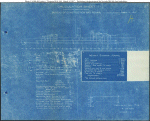
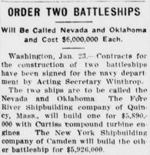
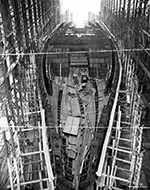
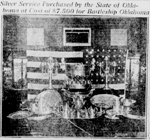
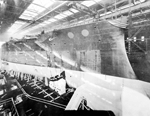
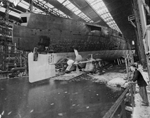
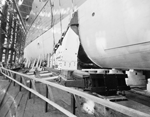
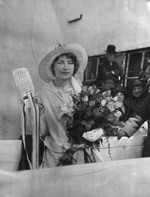



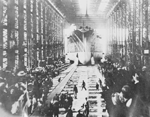

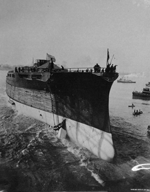


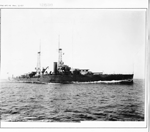
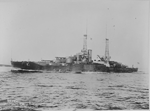 013700f
013700f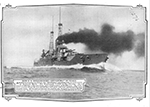
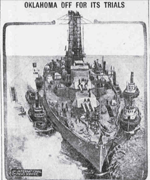
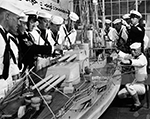
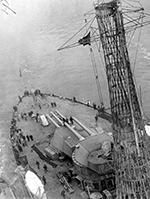
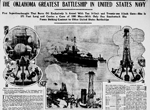

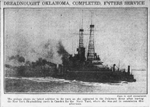
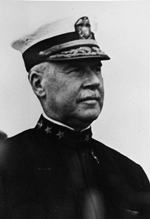
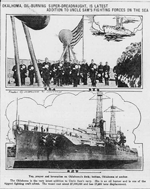 013786
013786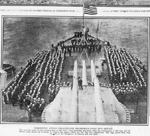
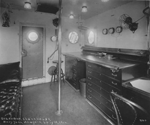
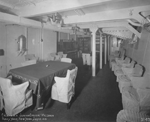
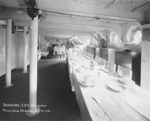
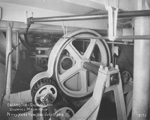
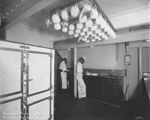
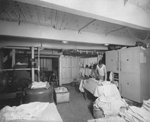
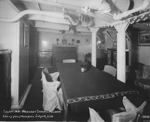
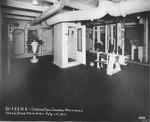
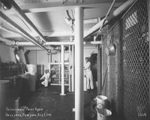
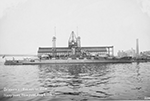

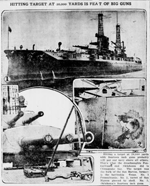

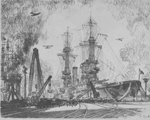 013617p
013617p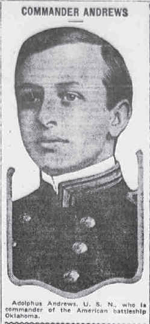
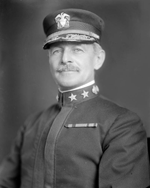
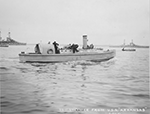
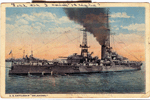
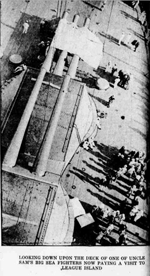
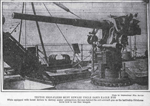
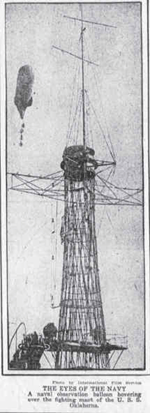
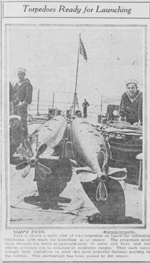

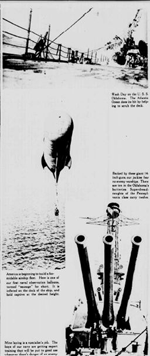

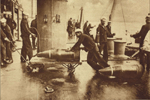

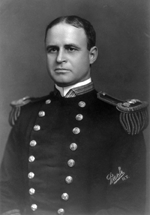
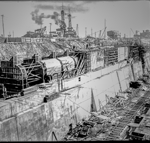
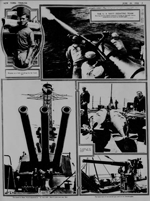
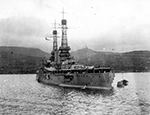
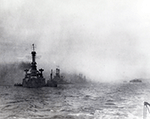
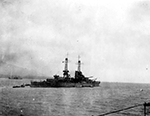
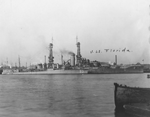
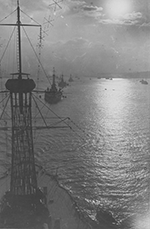
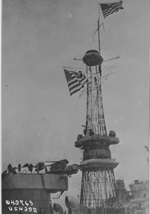 013774b
013774b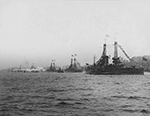
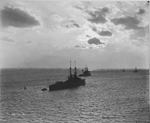 013062
013062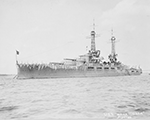

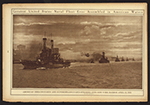
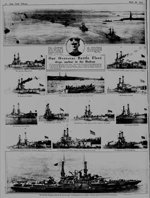
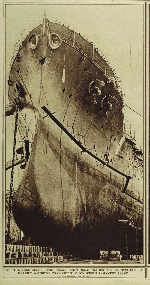
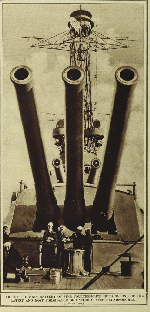


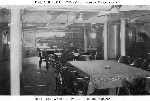
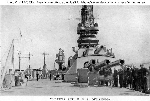
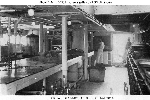
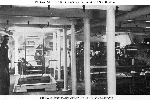
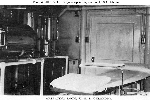
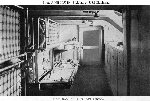
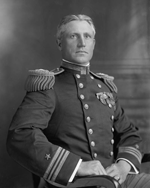

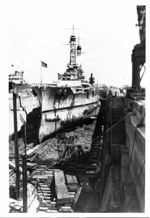
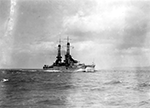


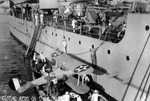


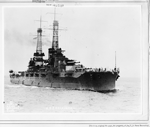
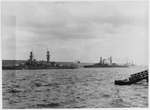 013927b
013927b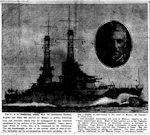
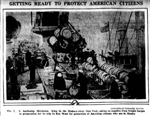
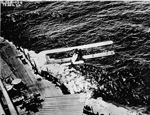
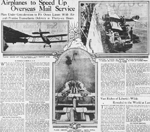


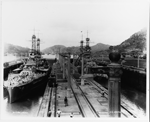 013946a
013946a

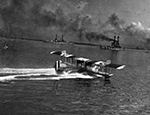
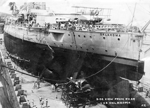
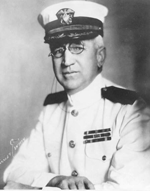

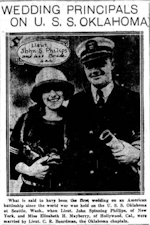


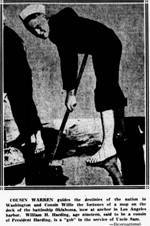
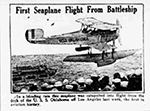


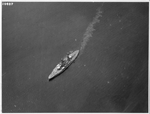

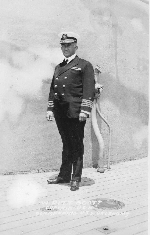
 013769
013769
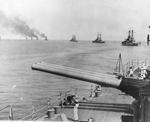
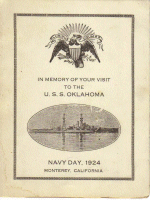


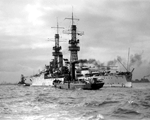
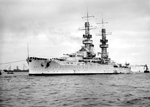
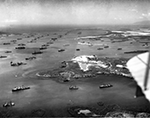
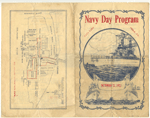
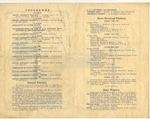
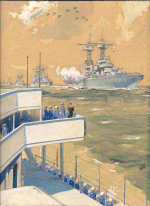
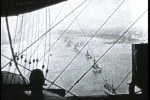
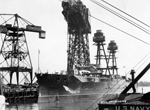 013720
013720
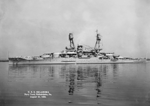
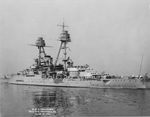

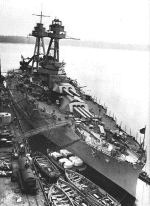
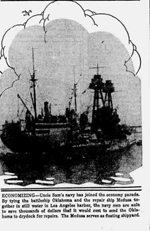 013730f
013730f 013714
013714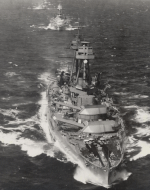
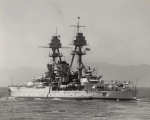
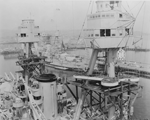 013708
013708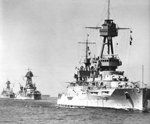




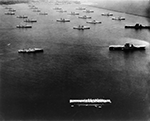
 013315
013315
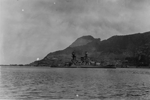

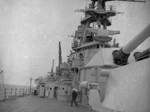
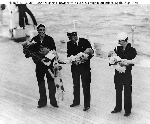
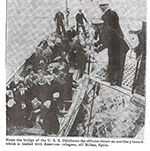
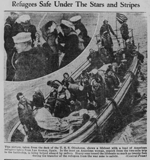 013736r
013736r


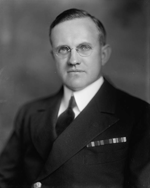

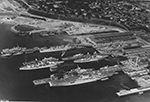


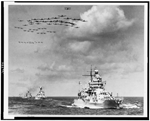
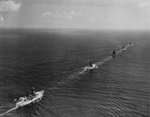
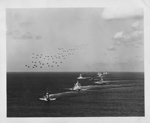
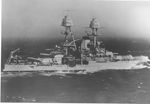
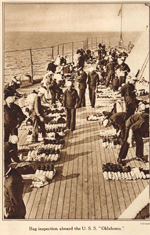
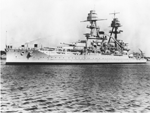
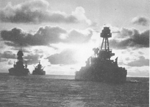



 013754
013754
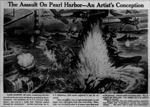 014325
014325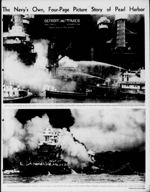 014316s
014316s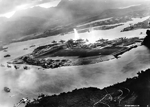
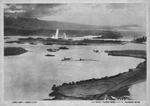

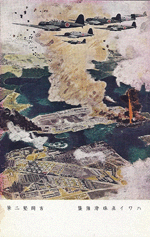
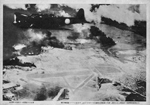

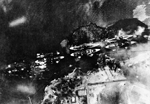


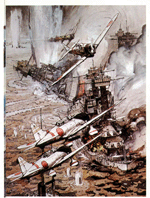
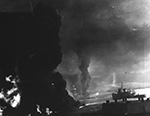
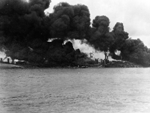
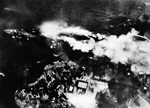
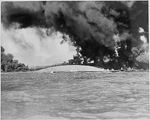
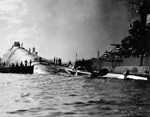
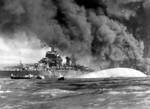
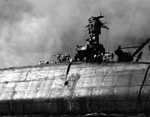
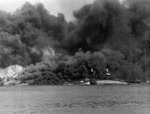
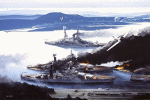
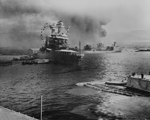
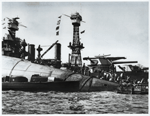
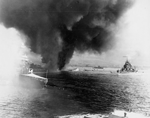
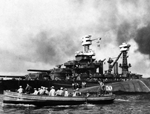
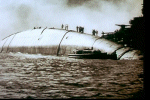
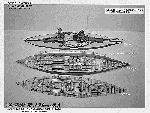
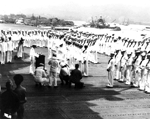
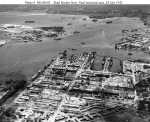
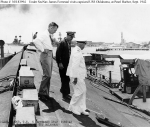

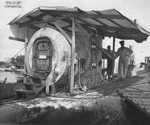
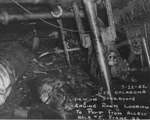
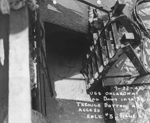

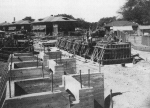
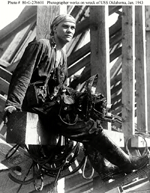
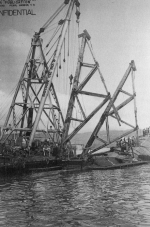
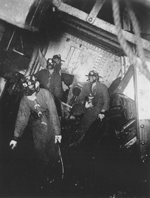 013787
013787
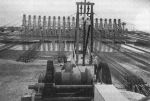
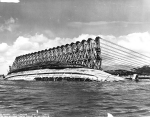
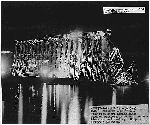
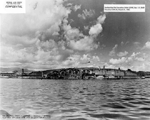

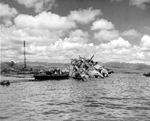
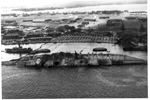
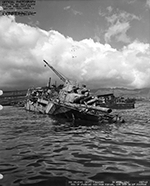
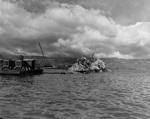


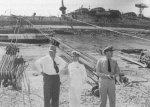
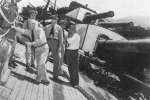
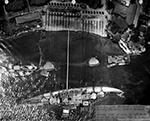
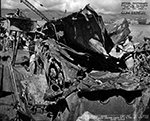
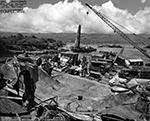
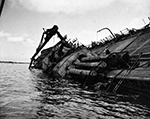
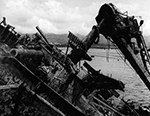
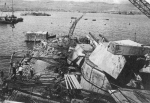
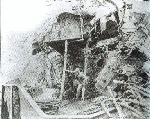
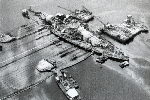
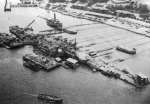
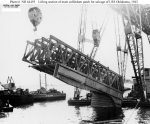
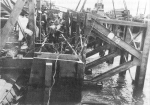
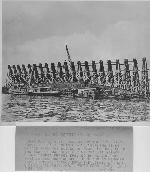
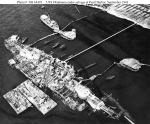
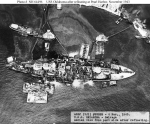
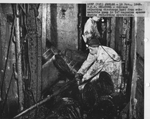
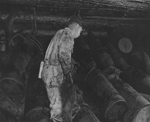 013787a
013787a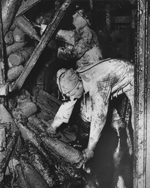 013787b
013787b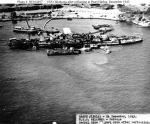
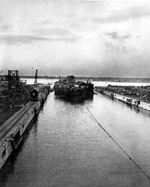
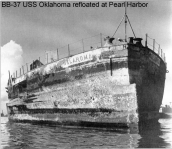
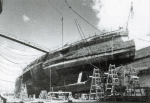
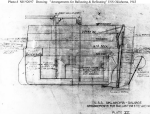
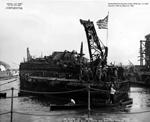
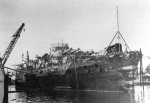
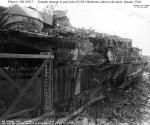
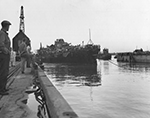
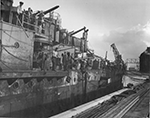
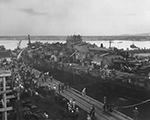
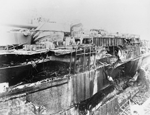
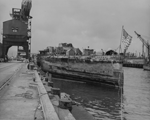 013702h
013702h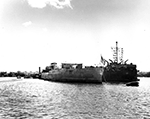

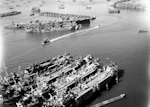
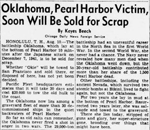
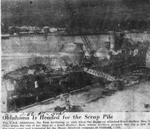

 013747a
013747a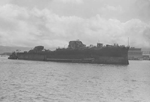
 013775
013775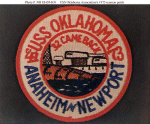
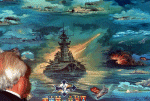
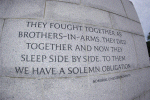
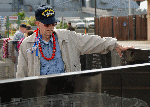
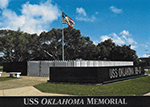
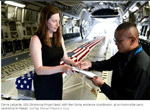 013717
013717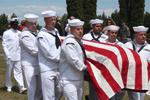 013774m
013774m